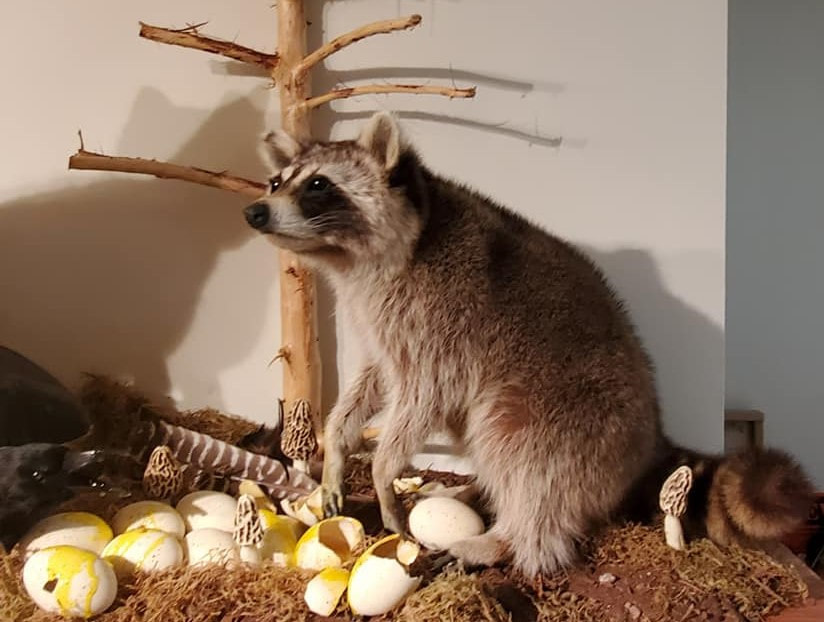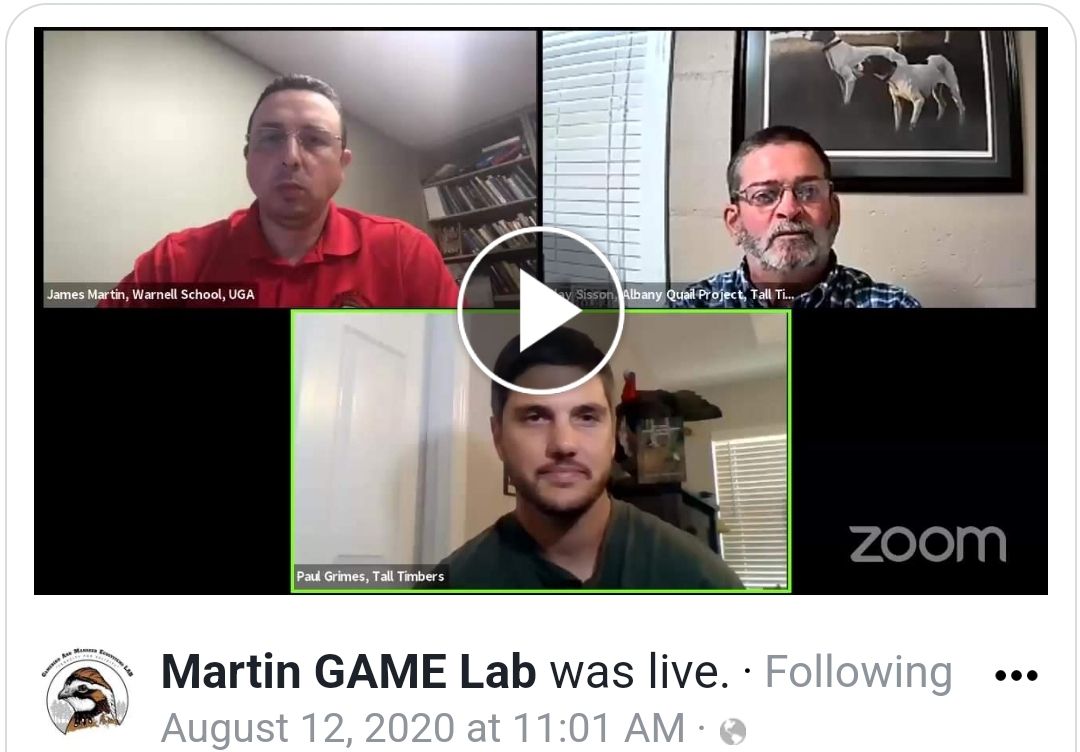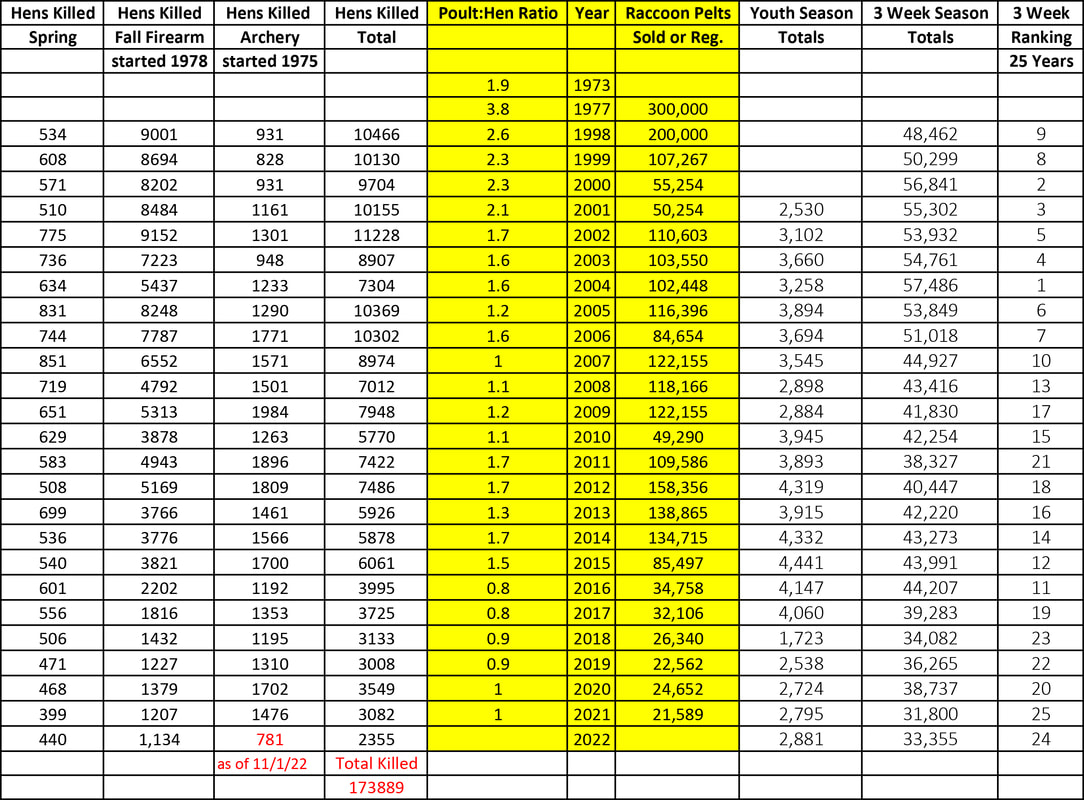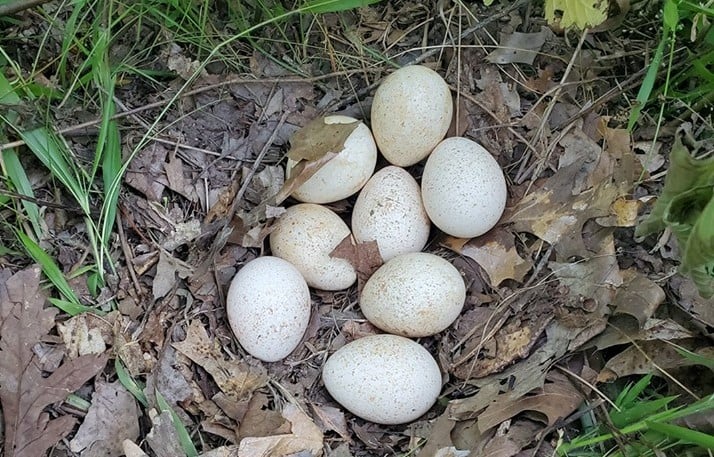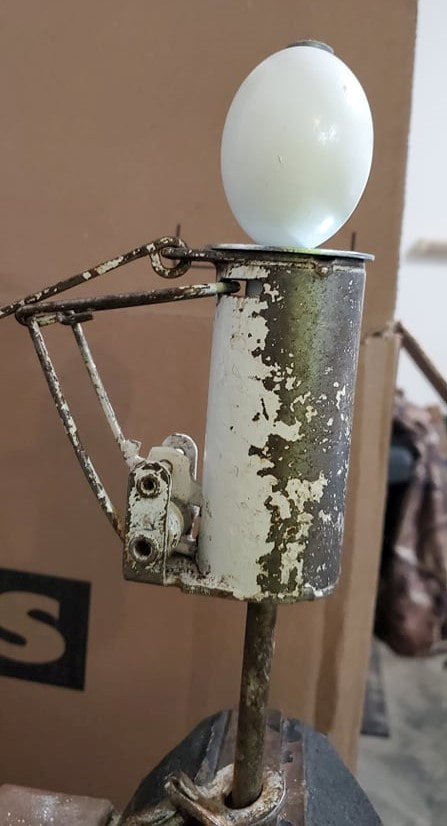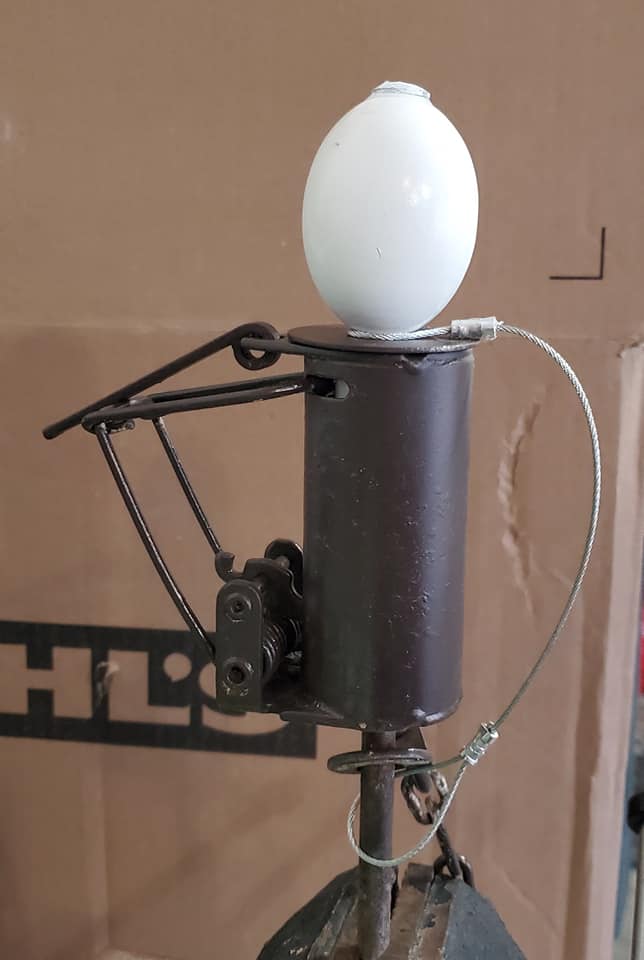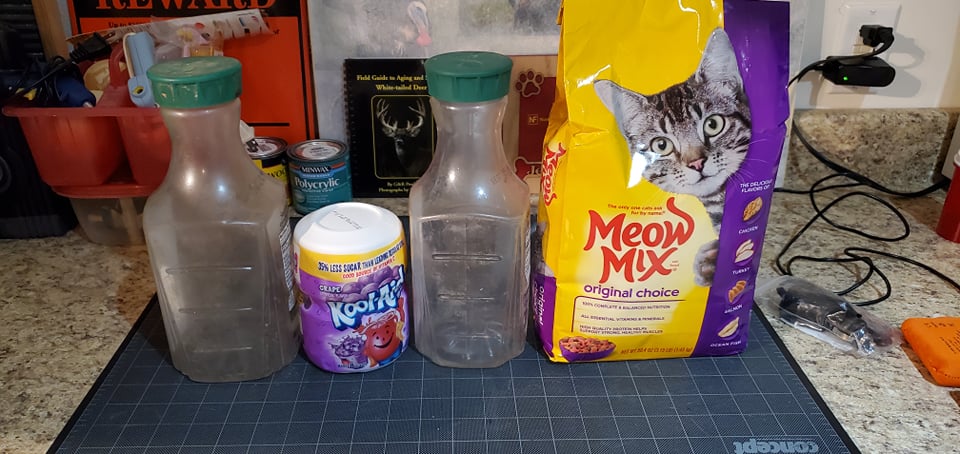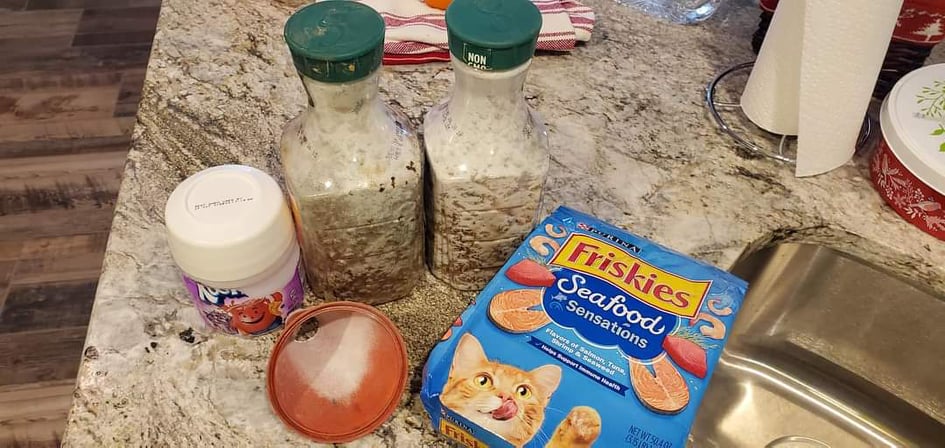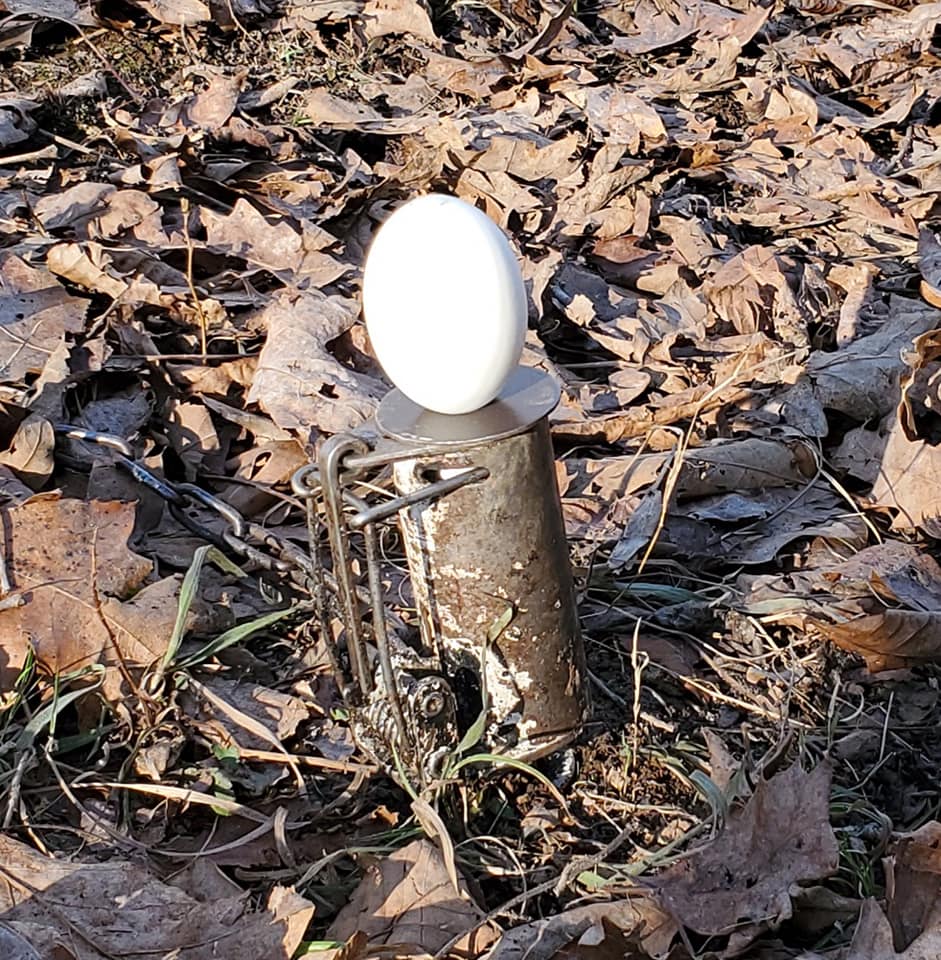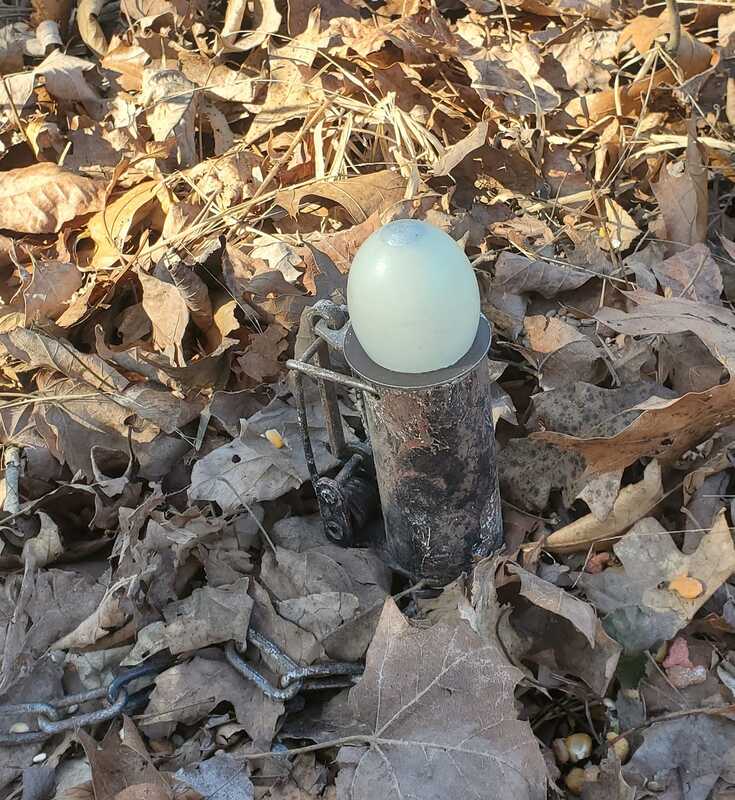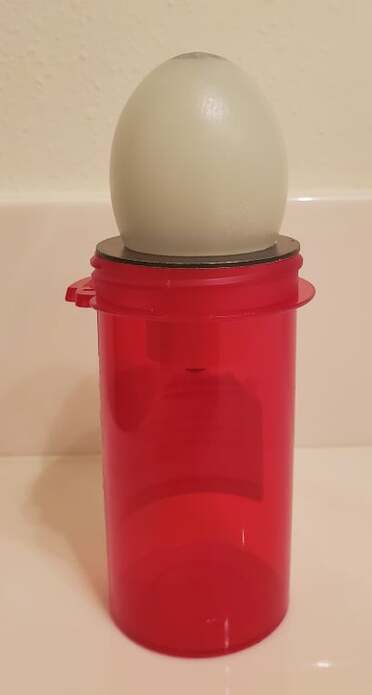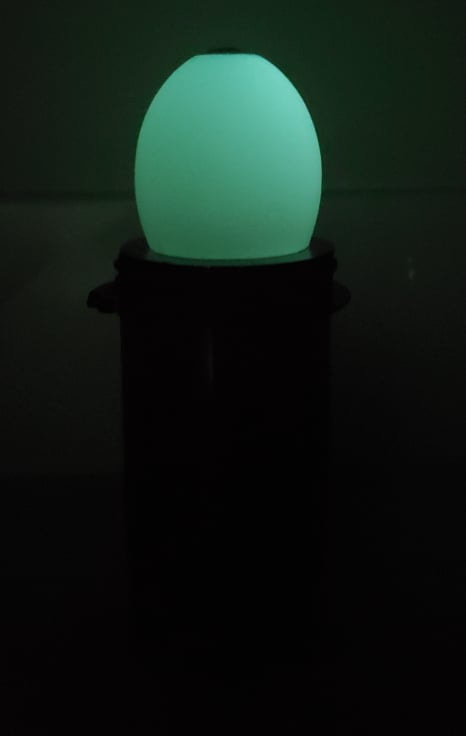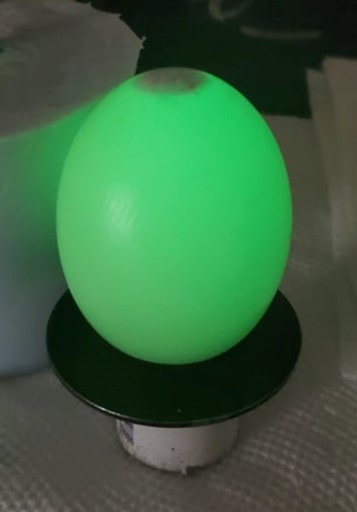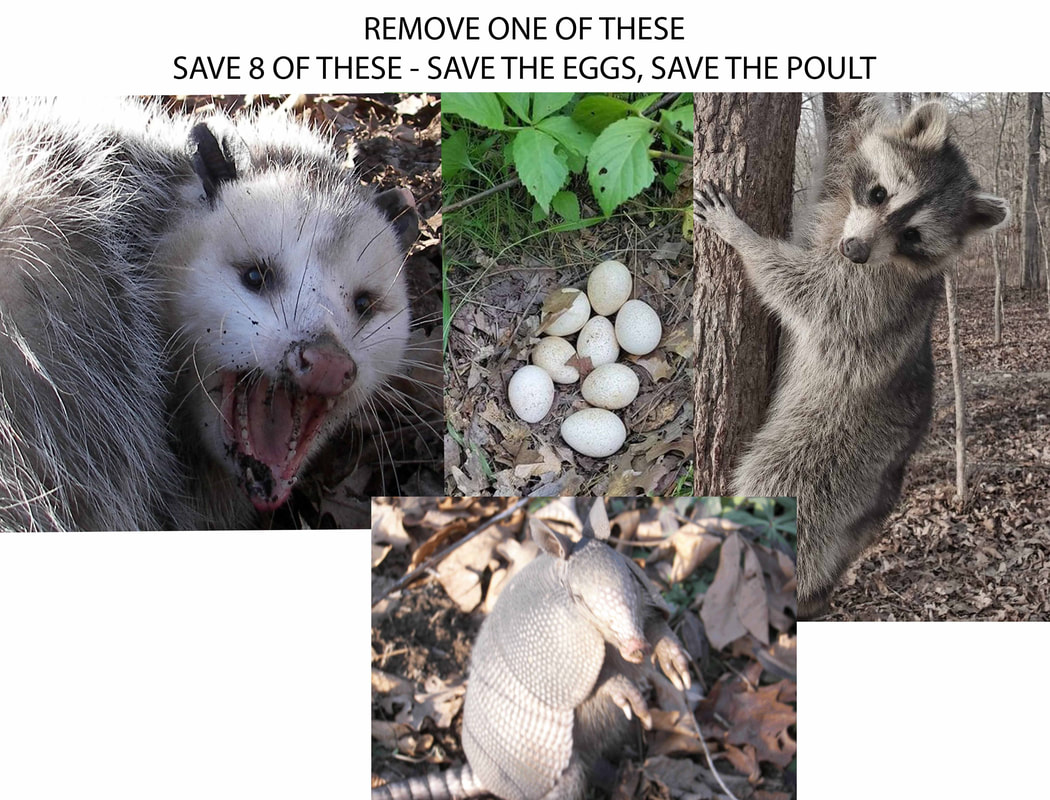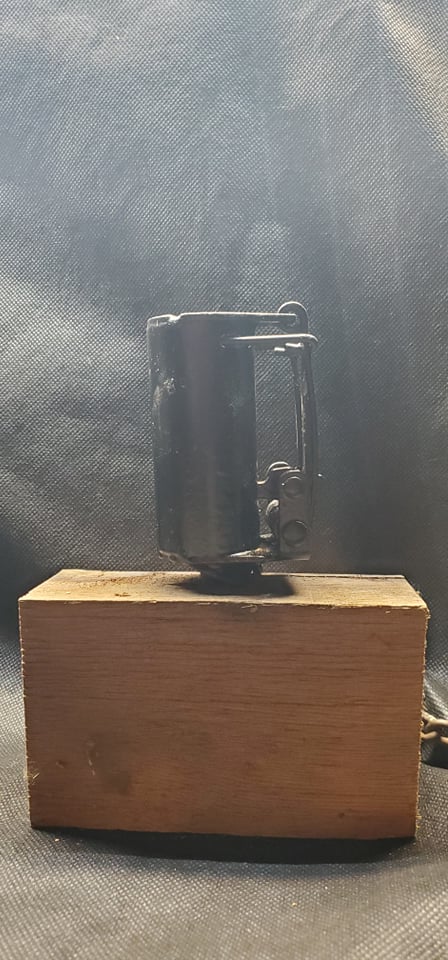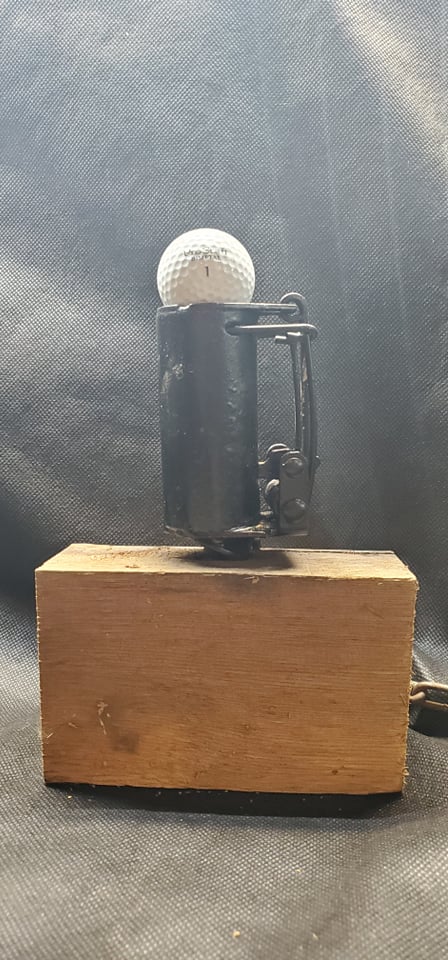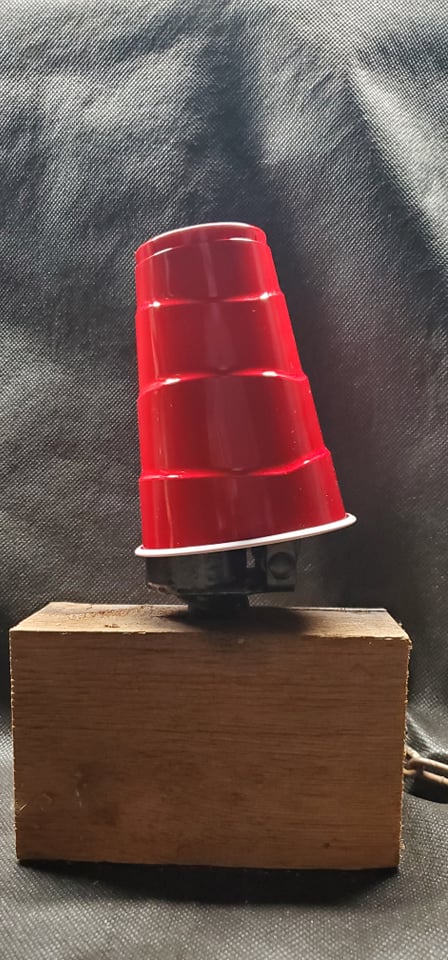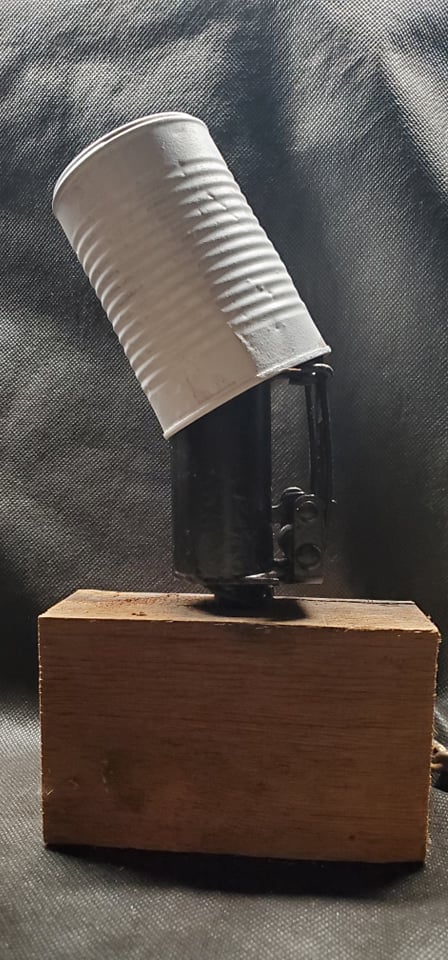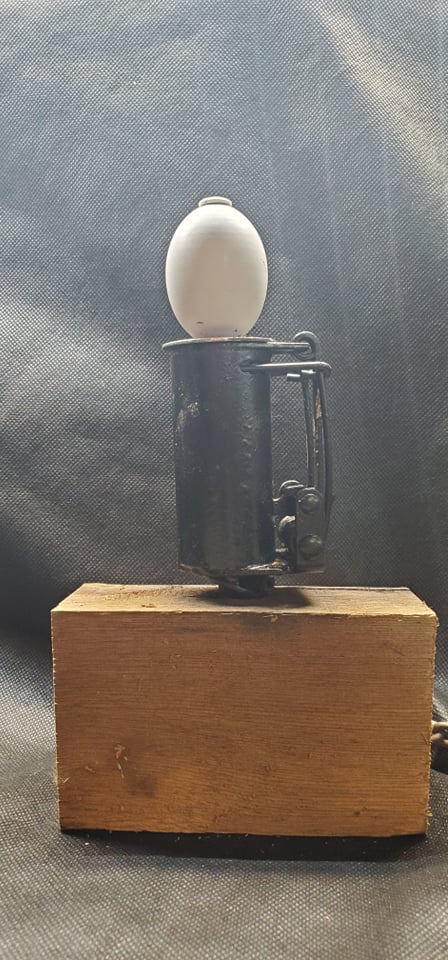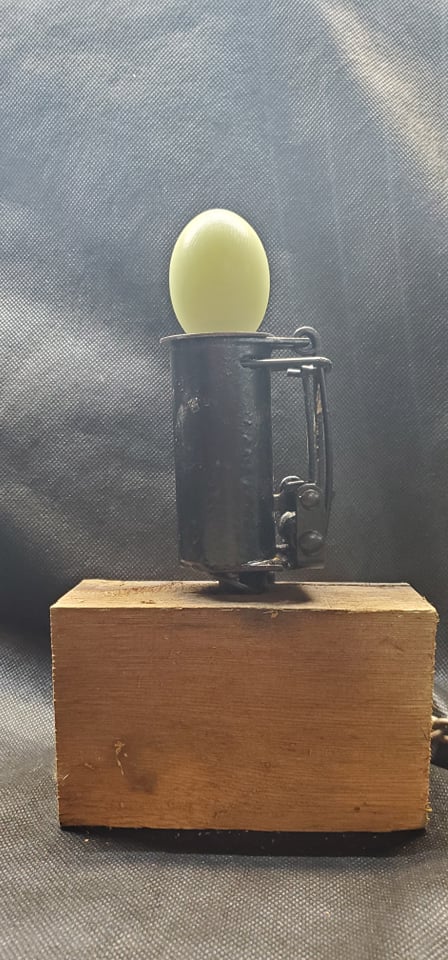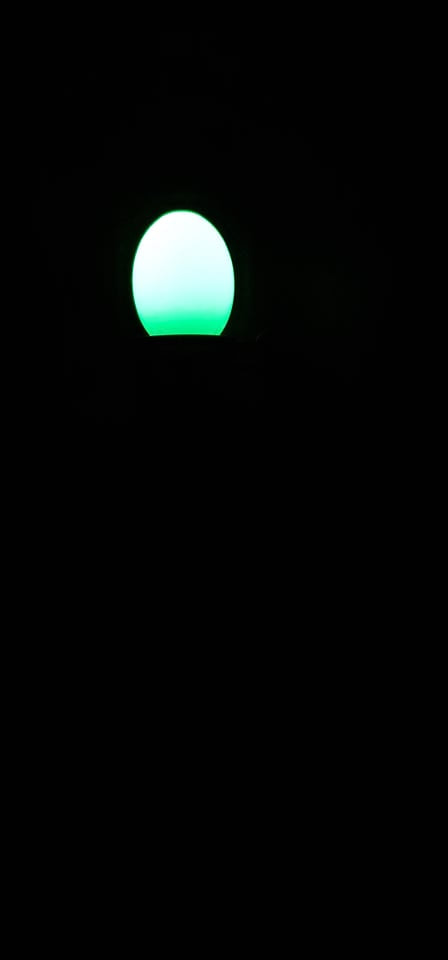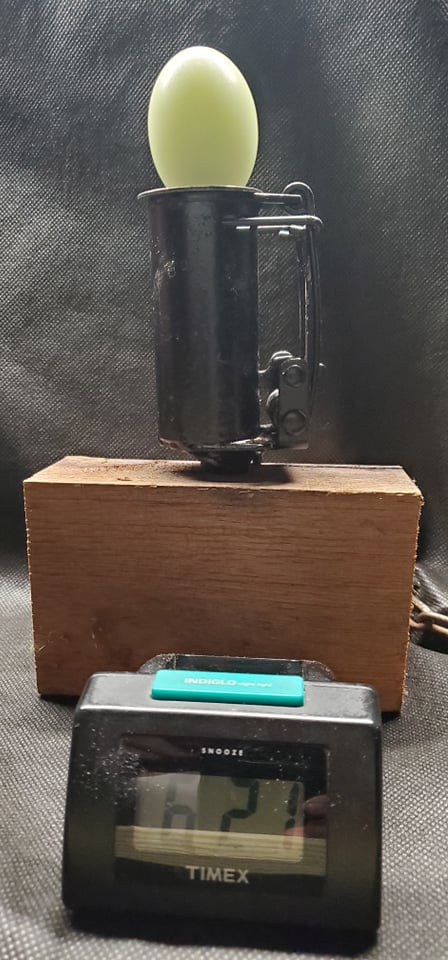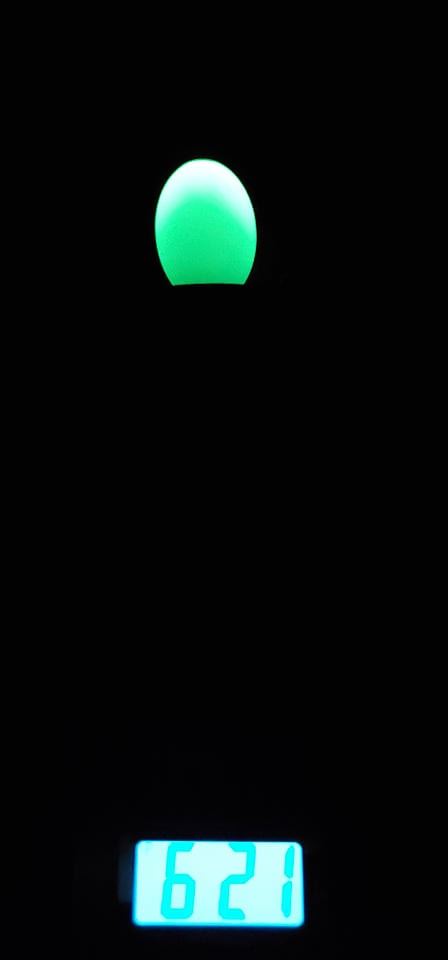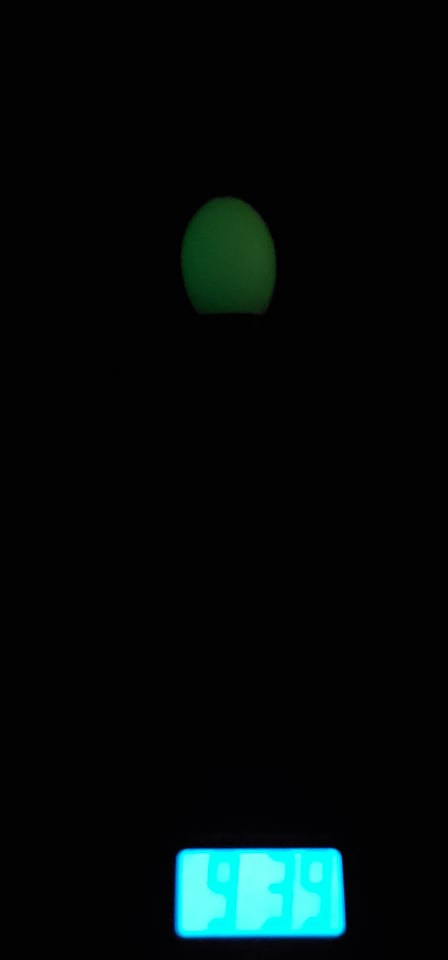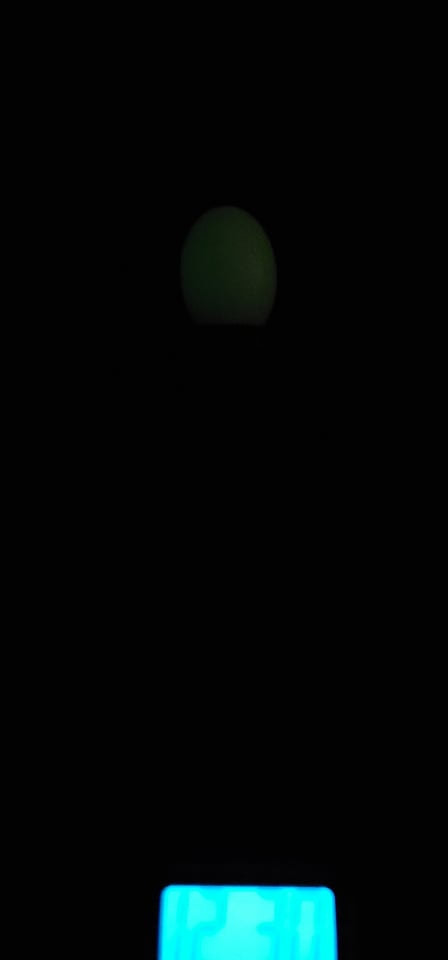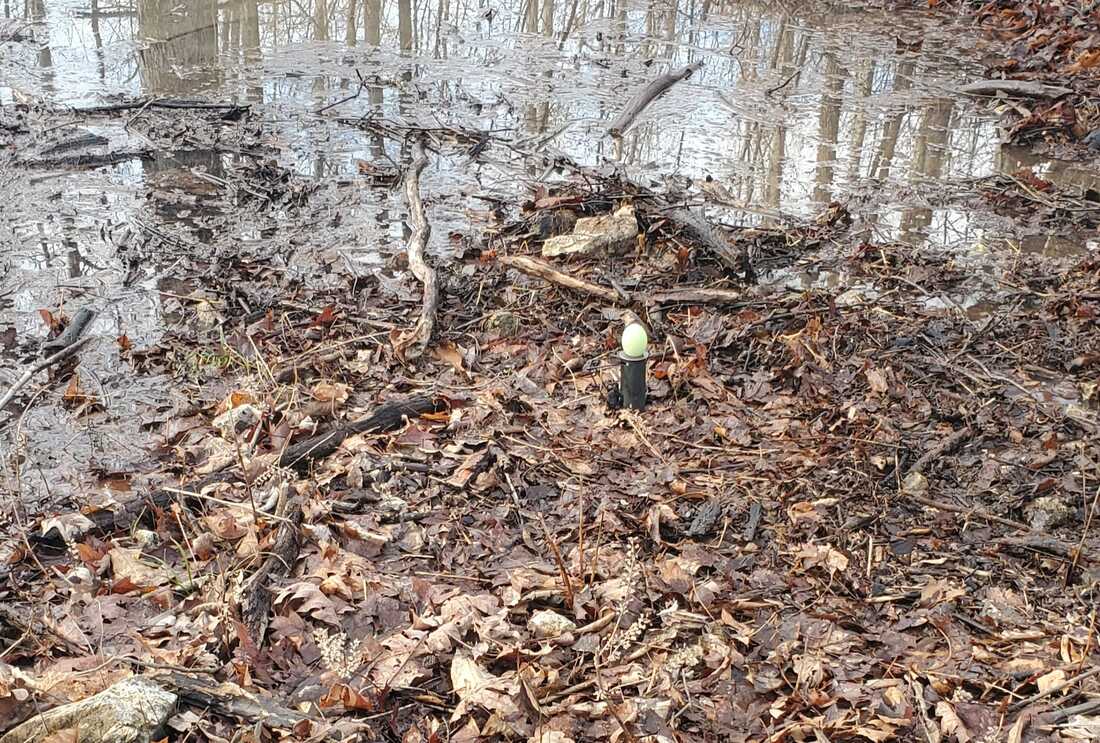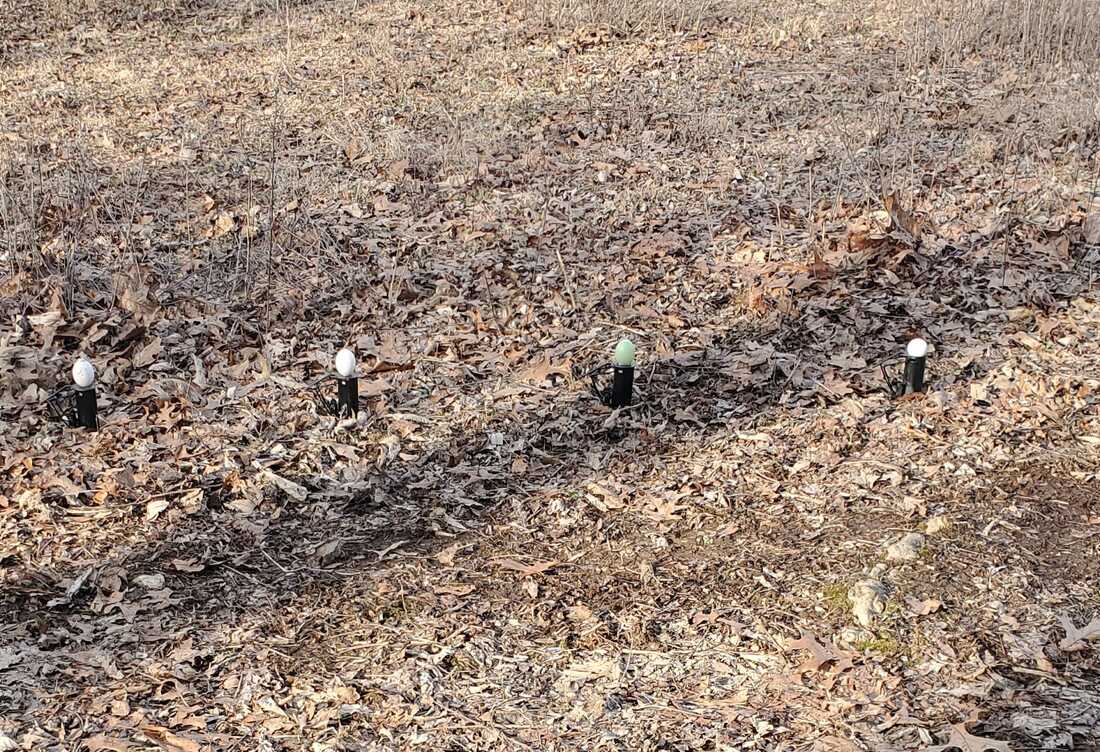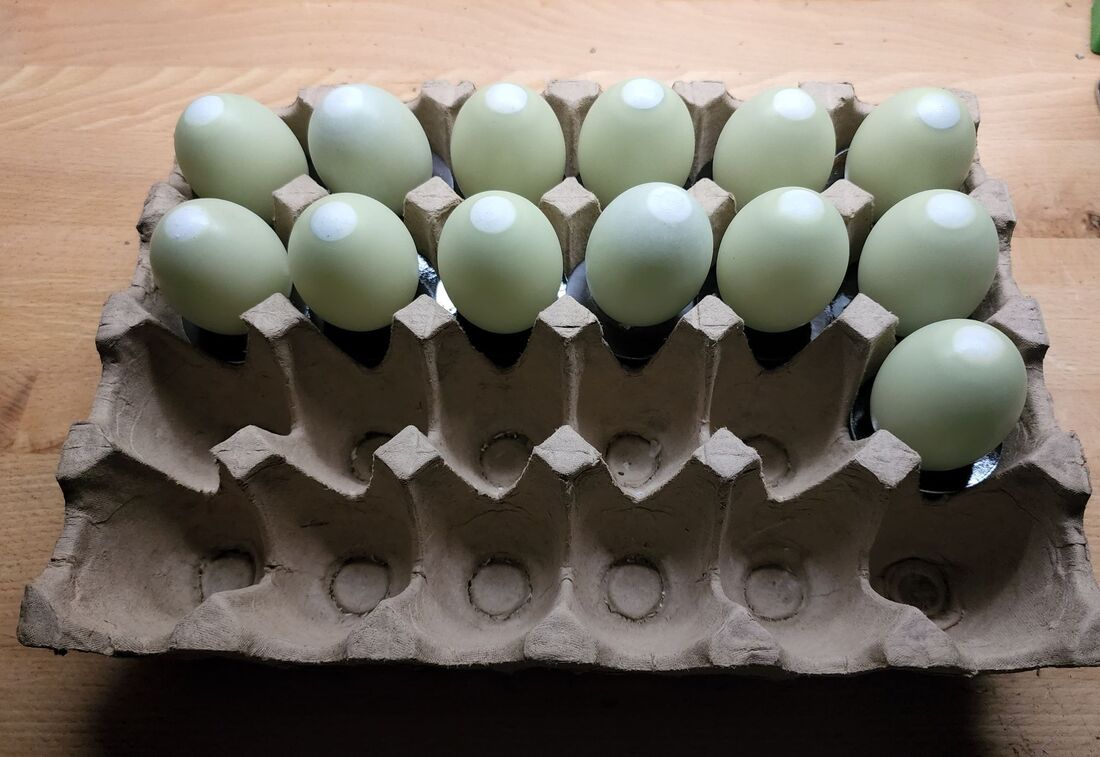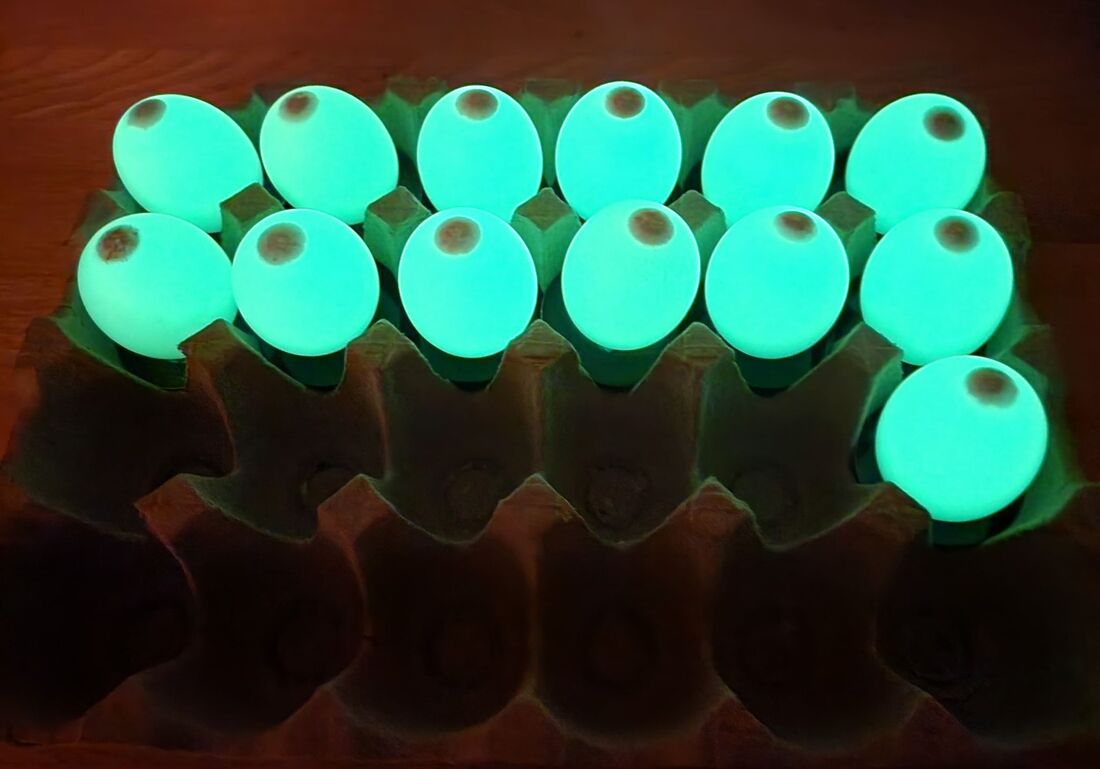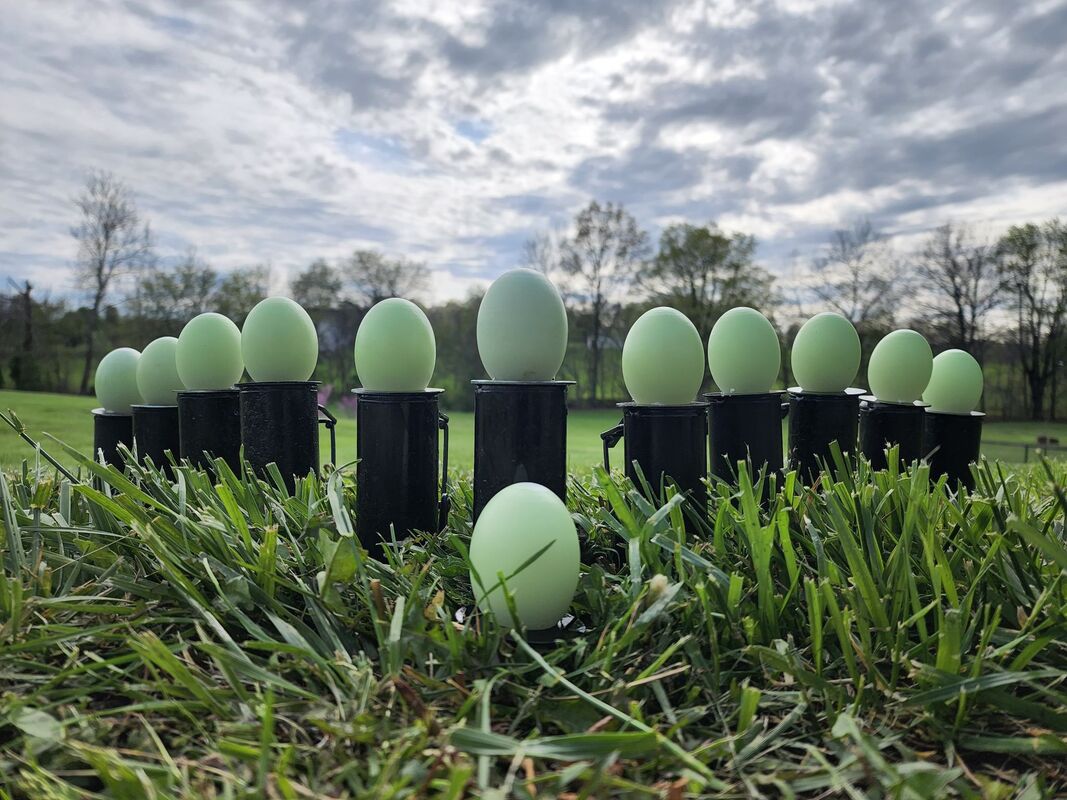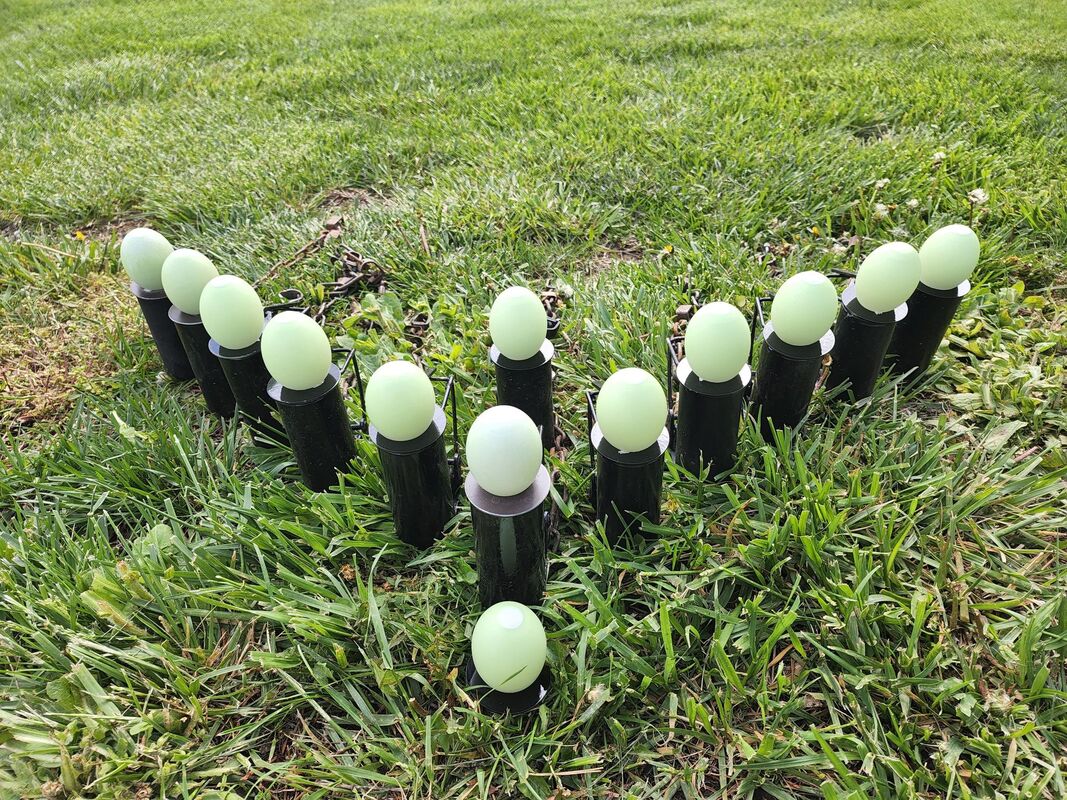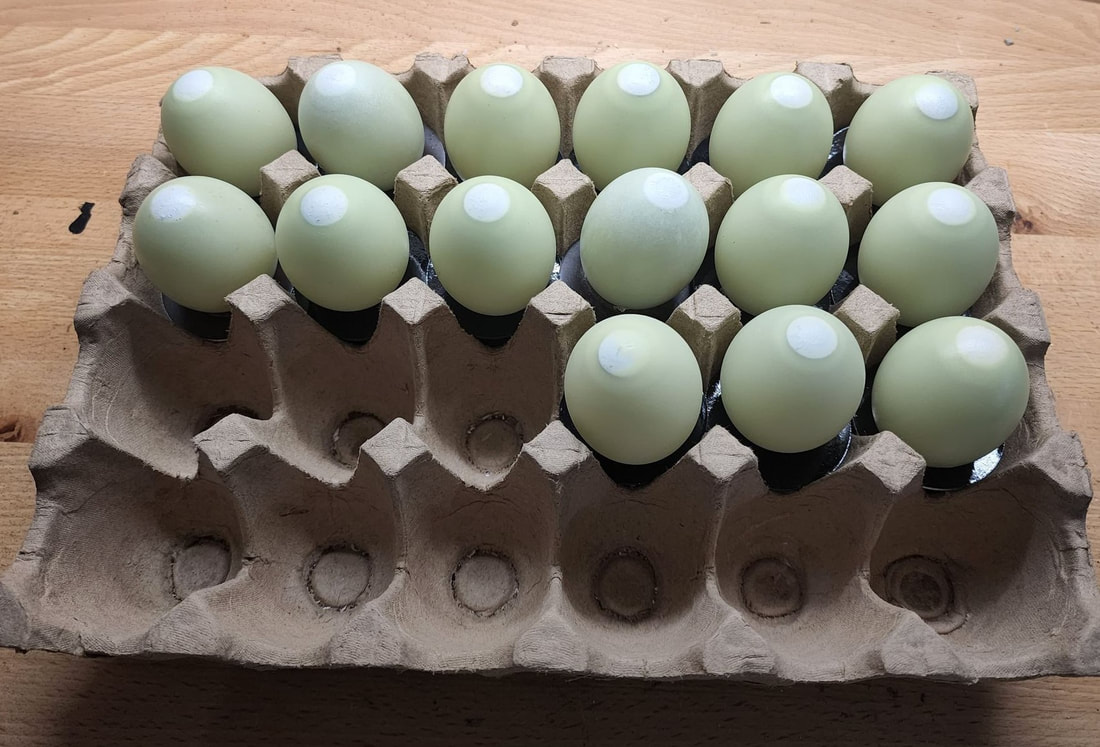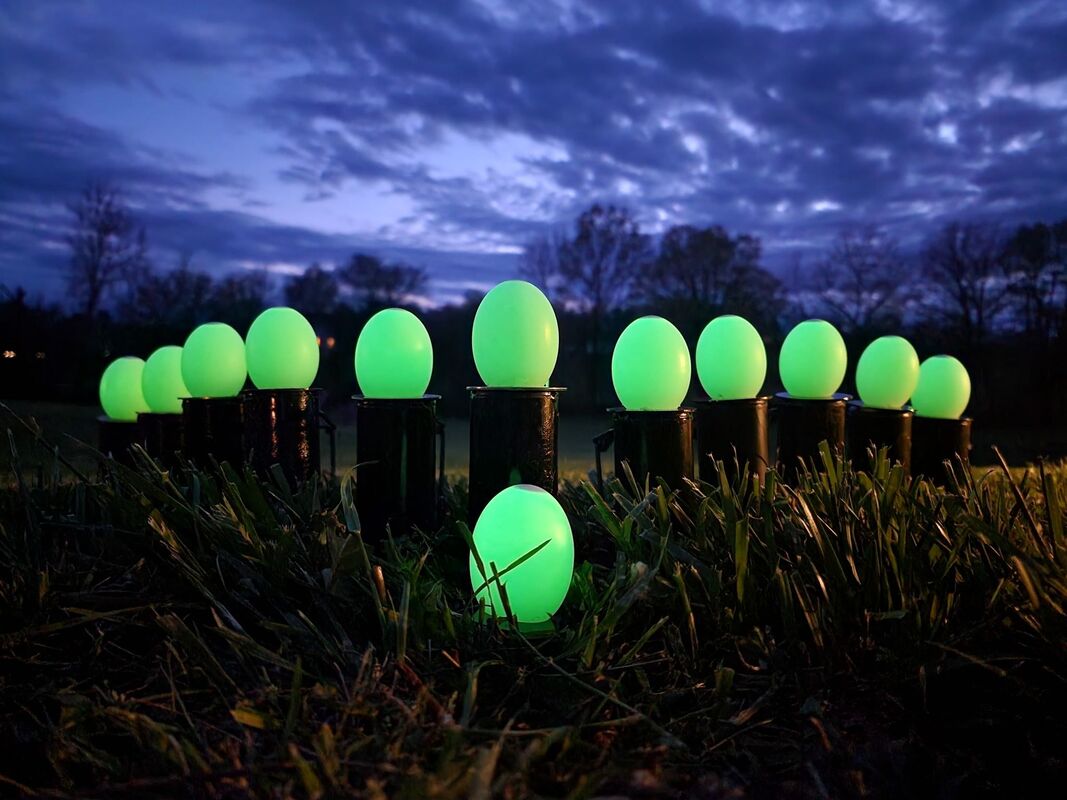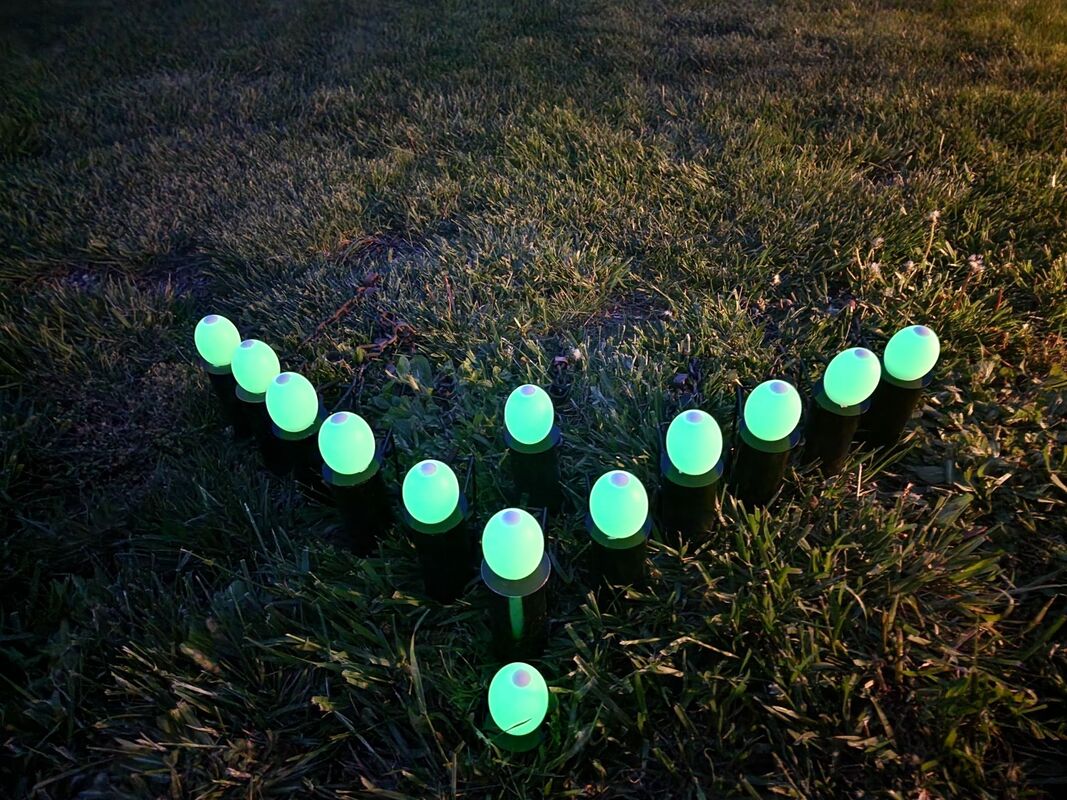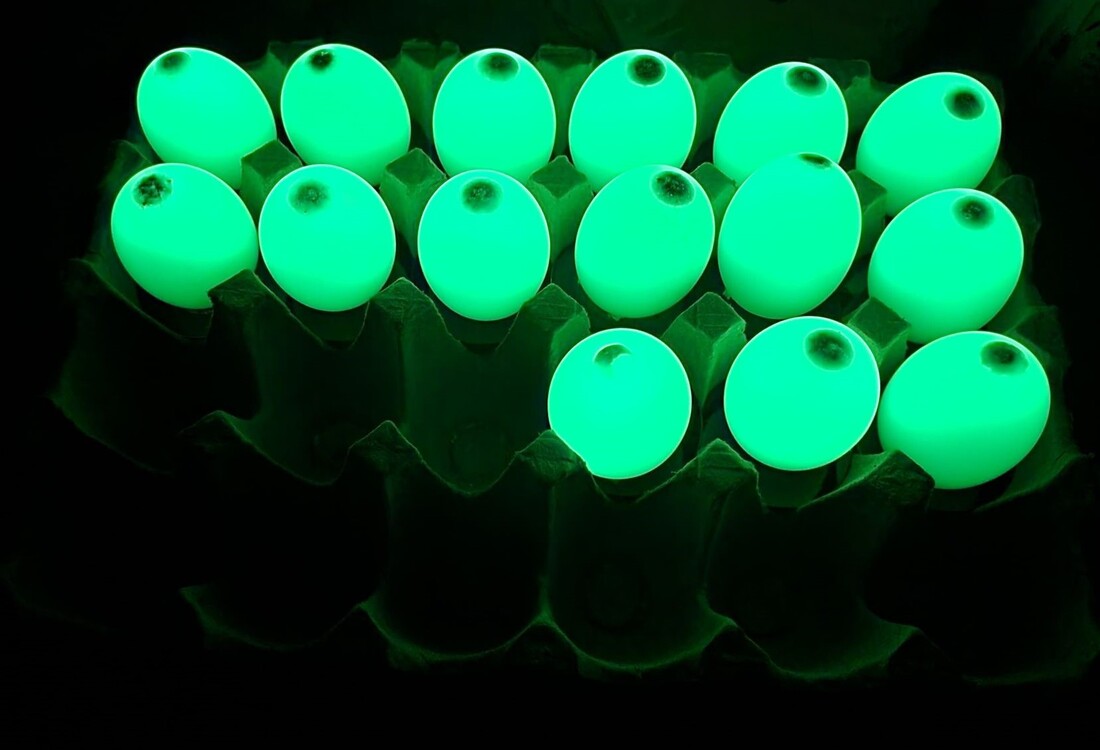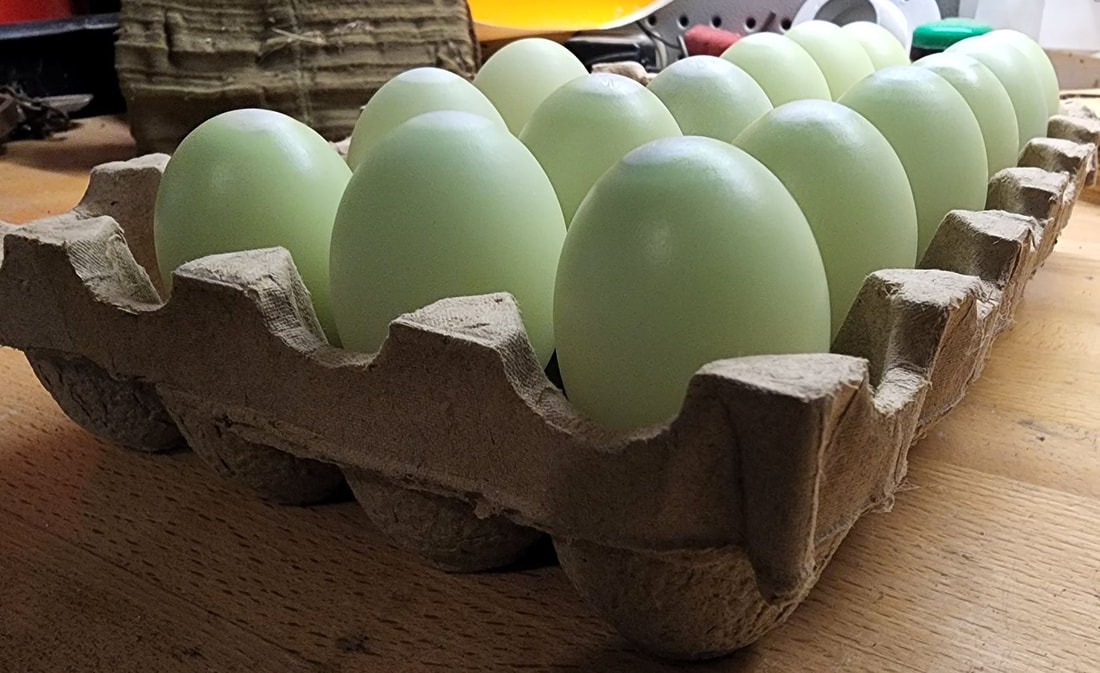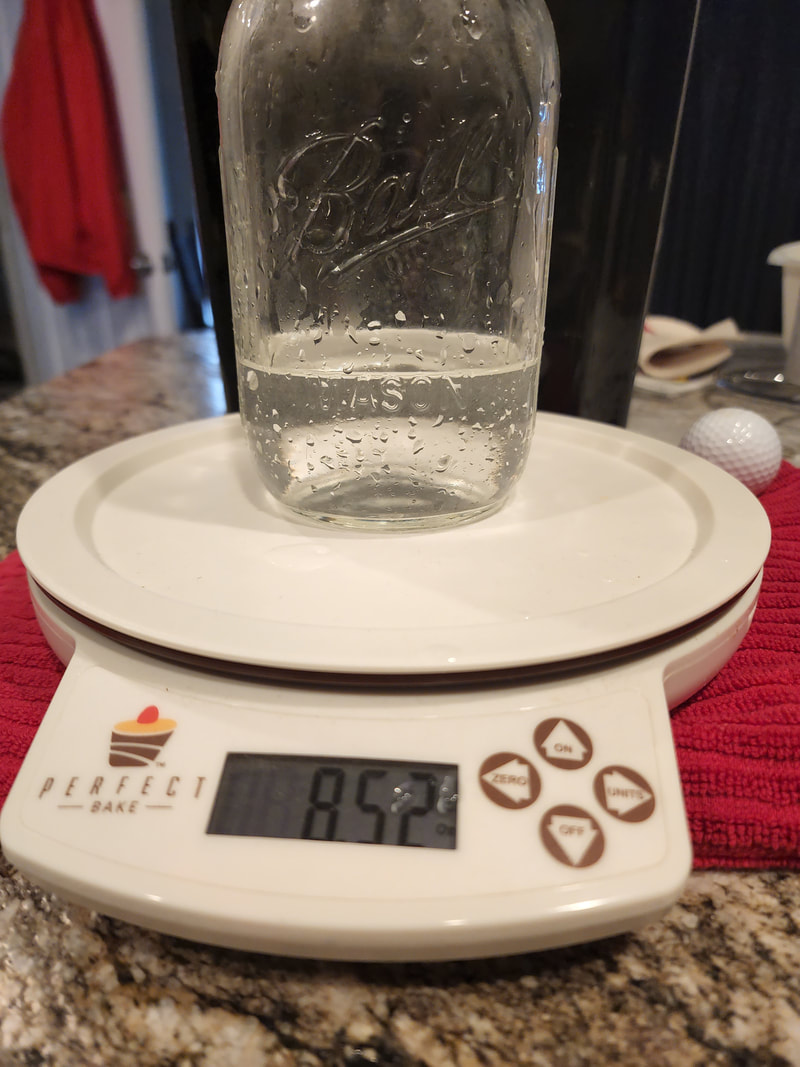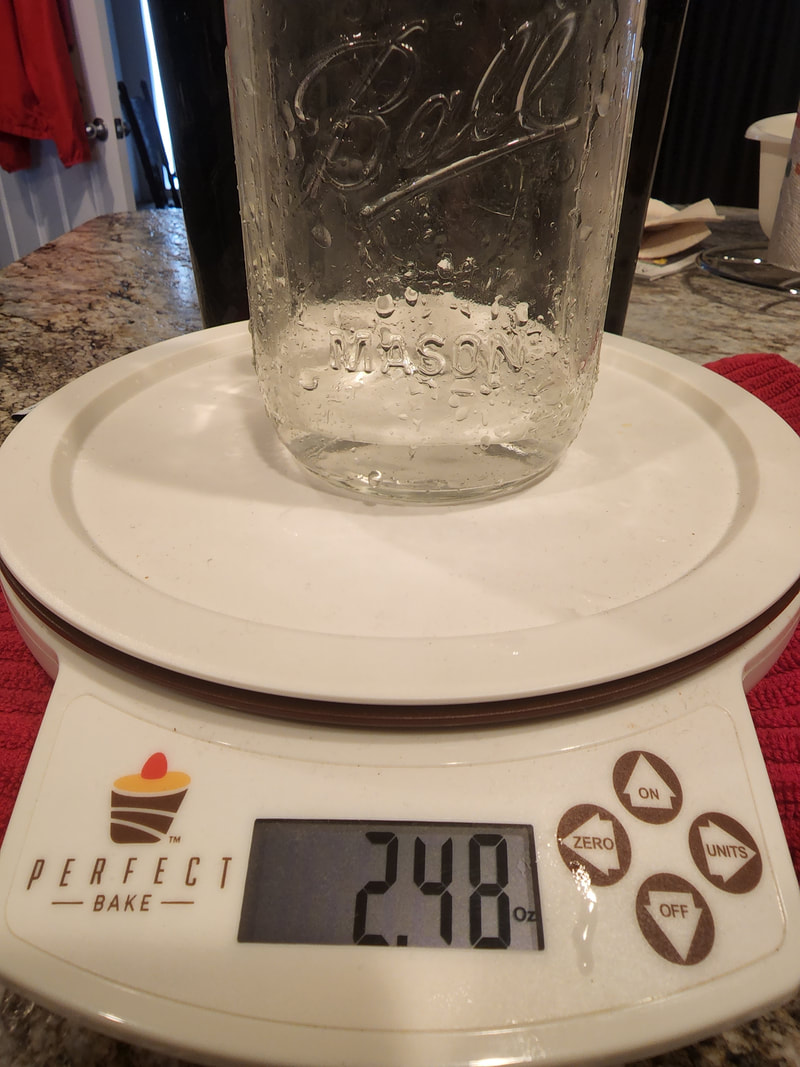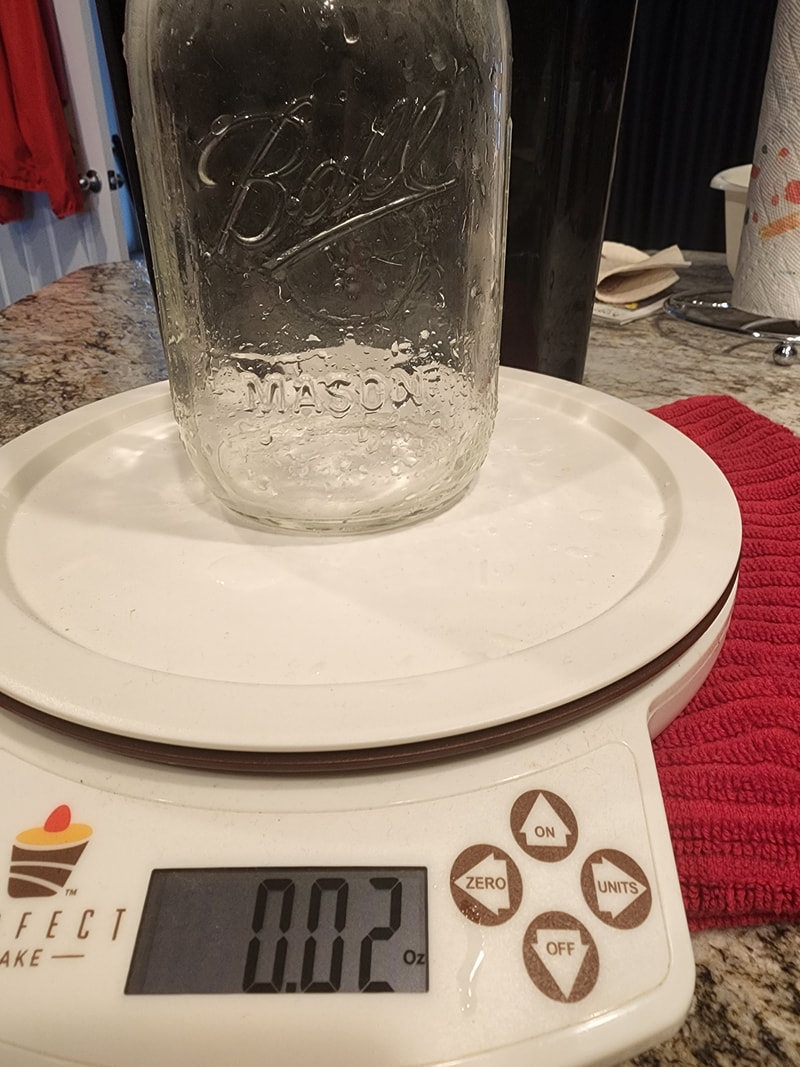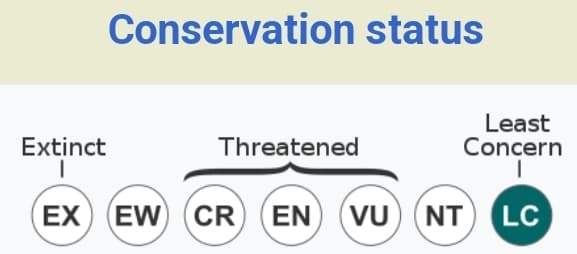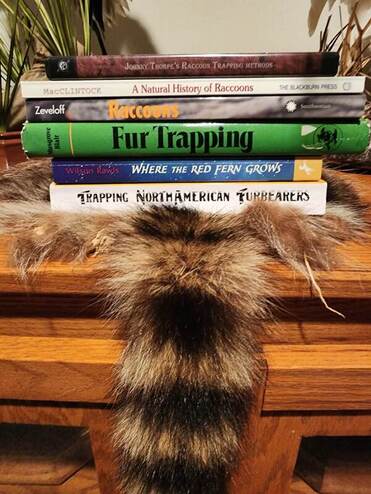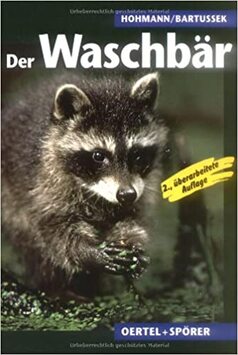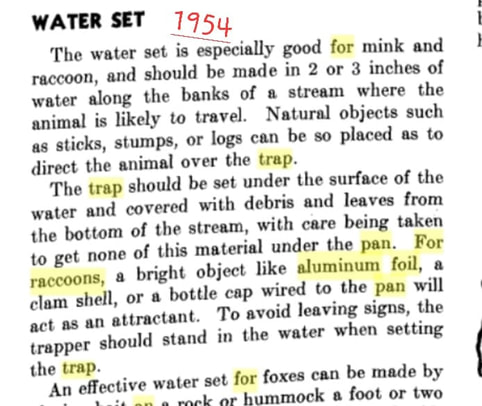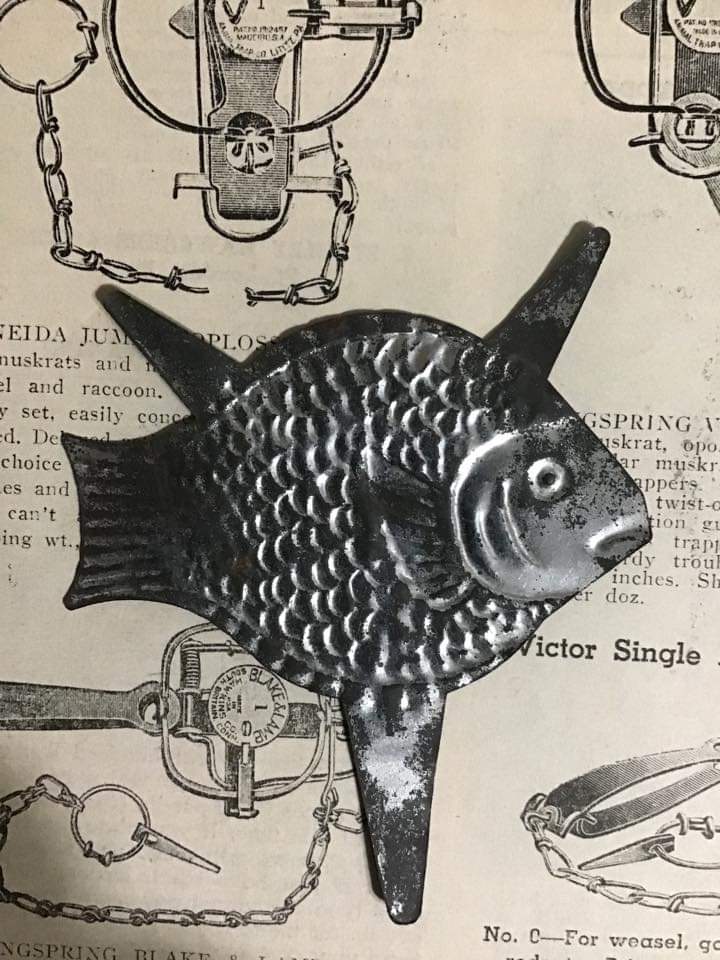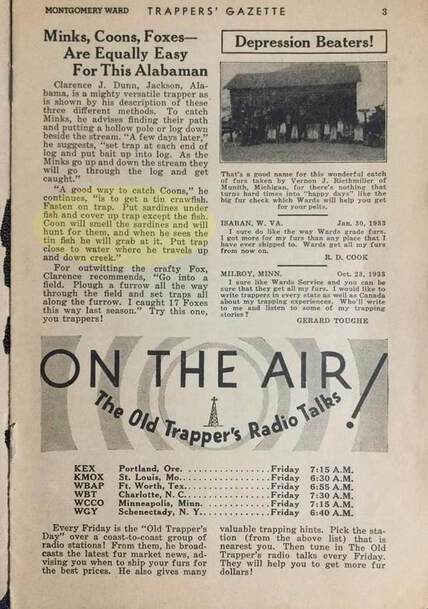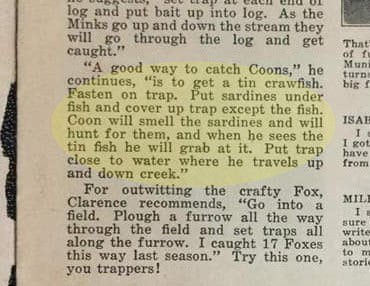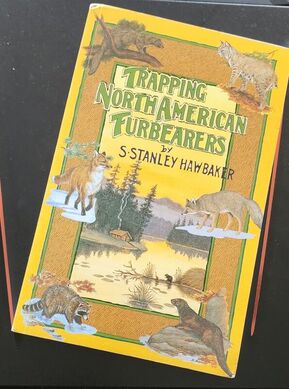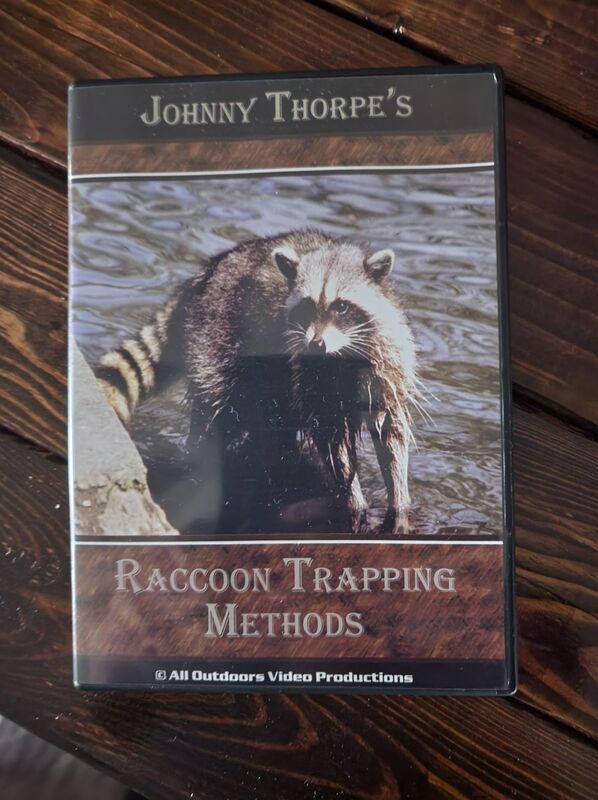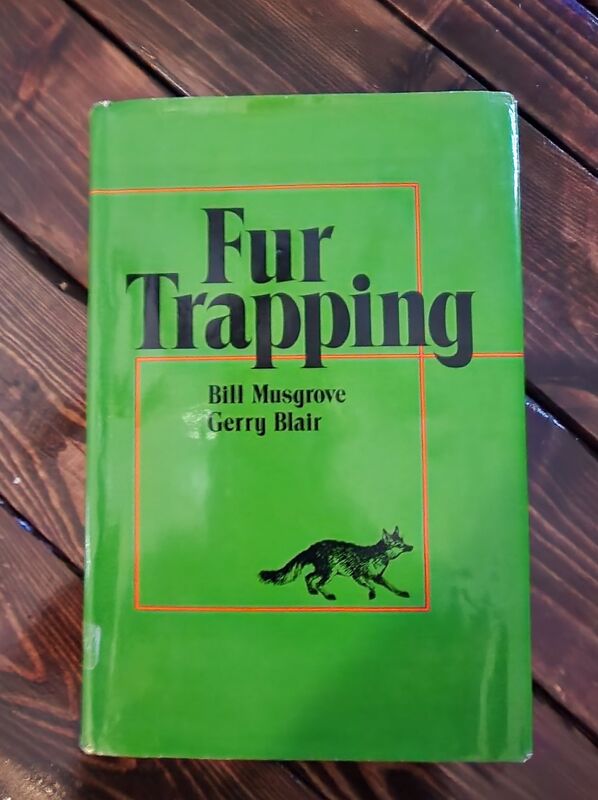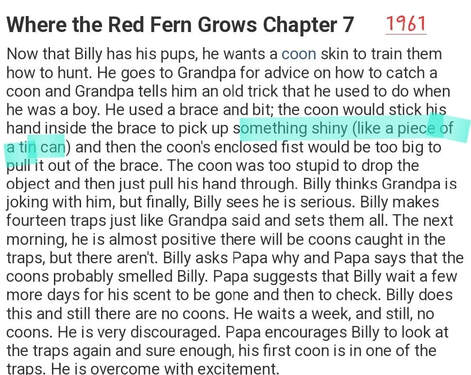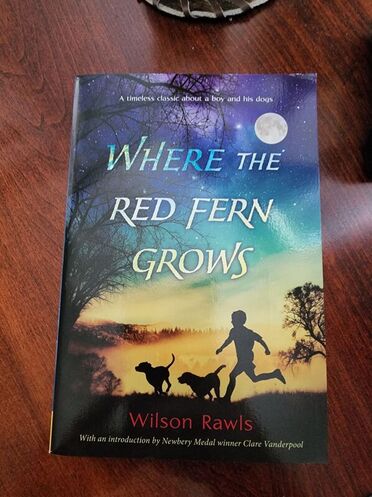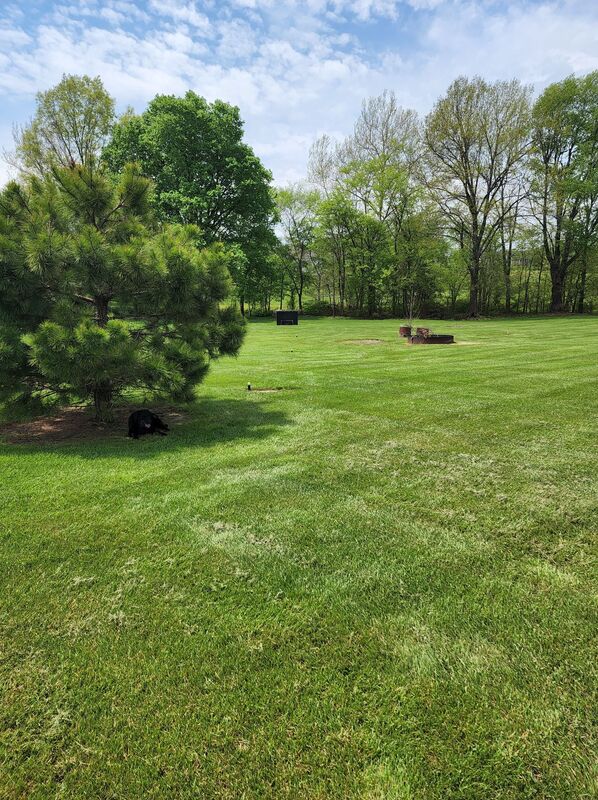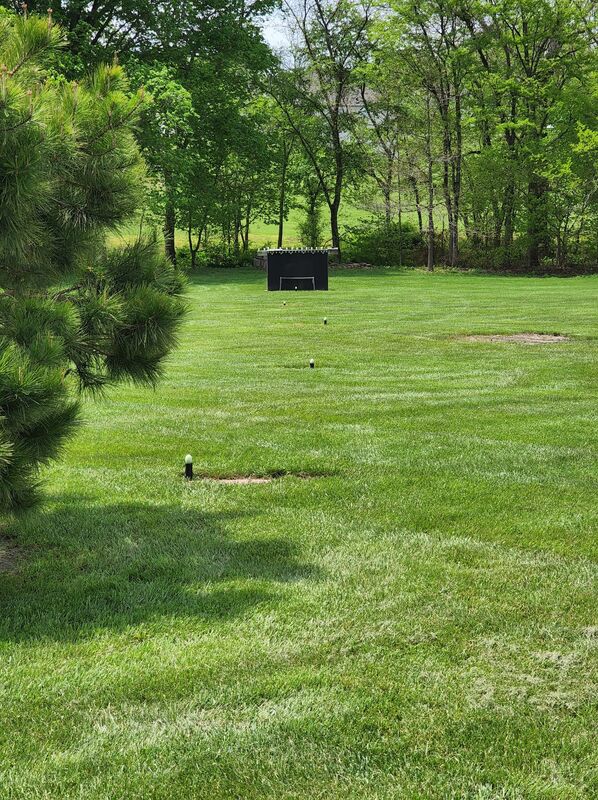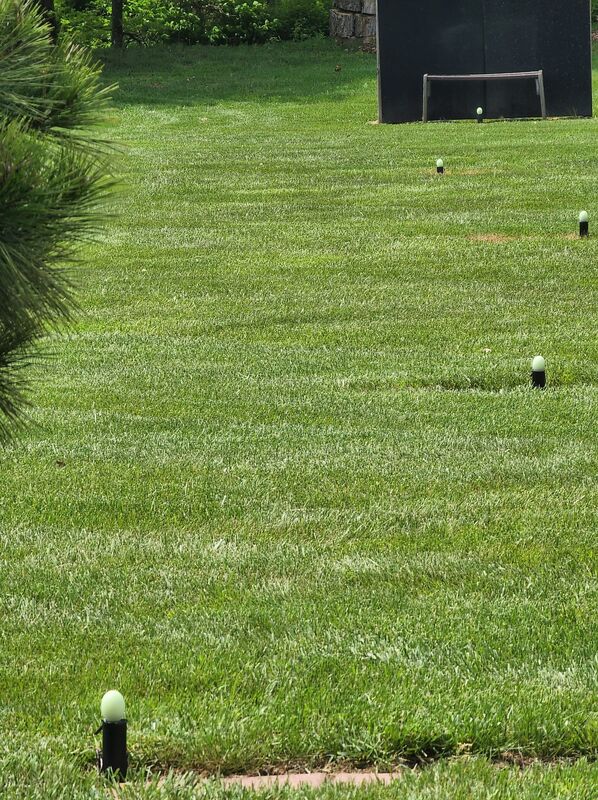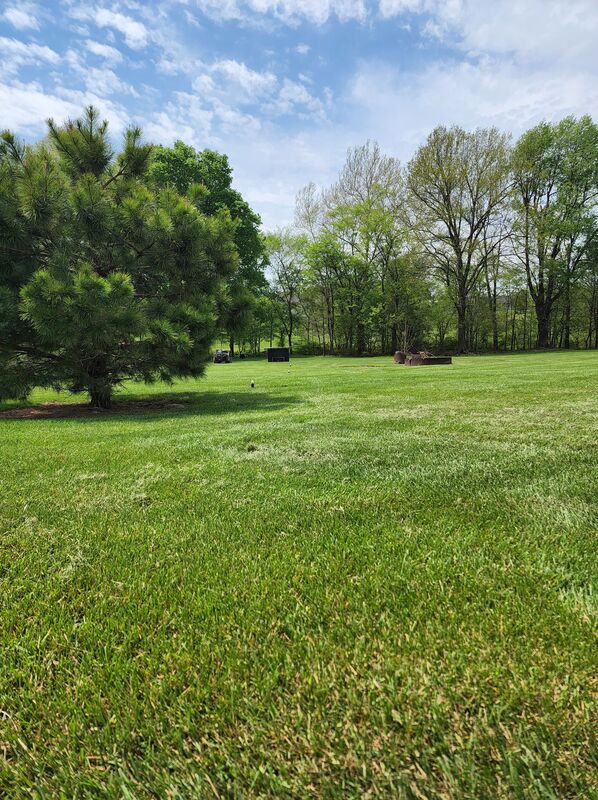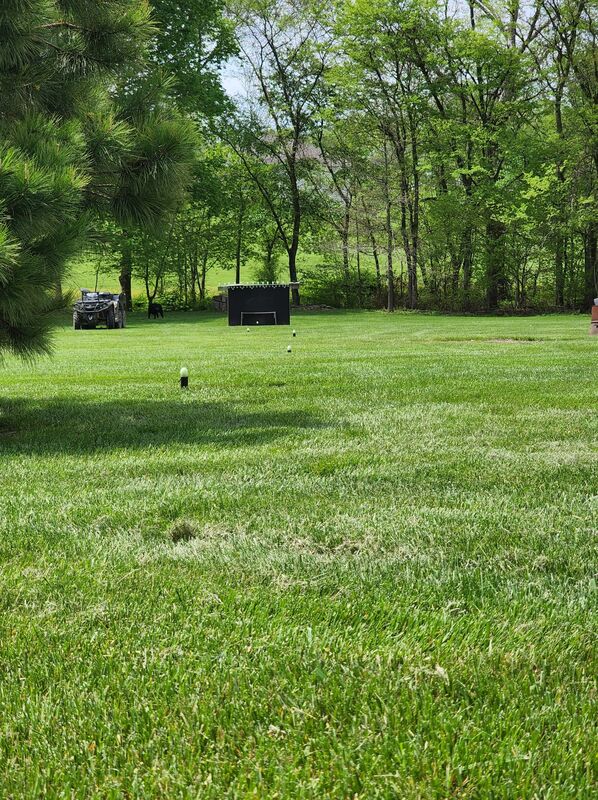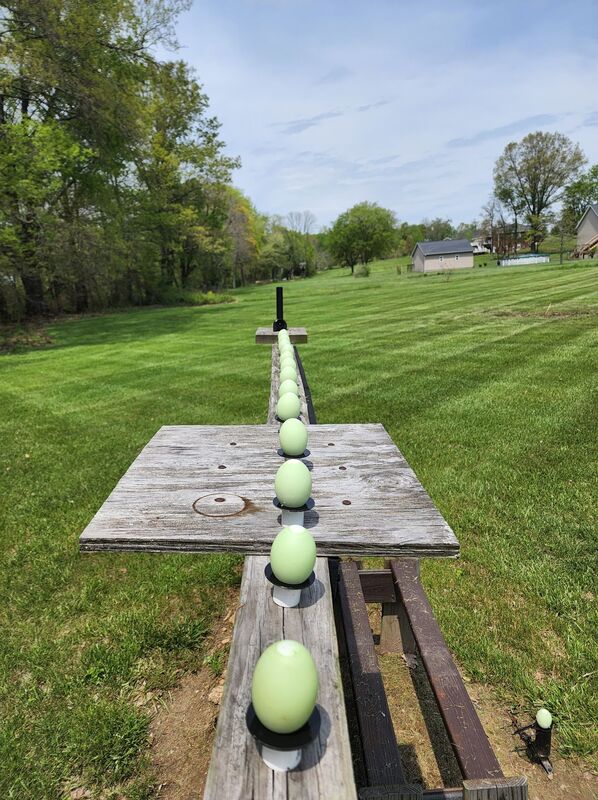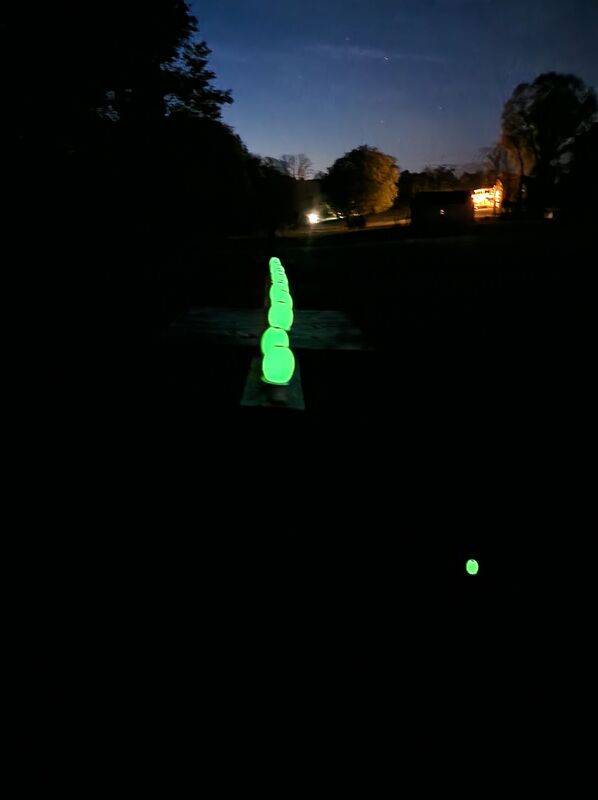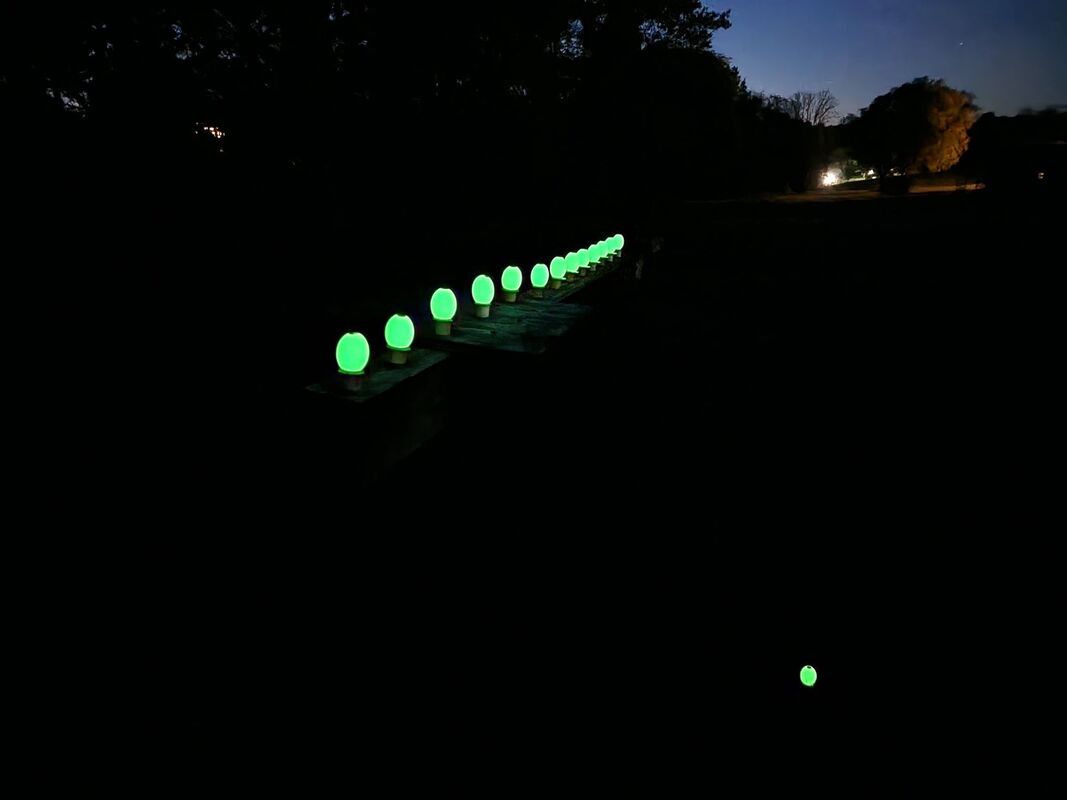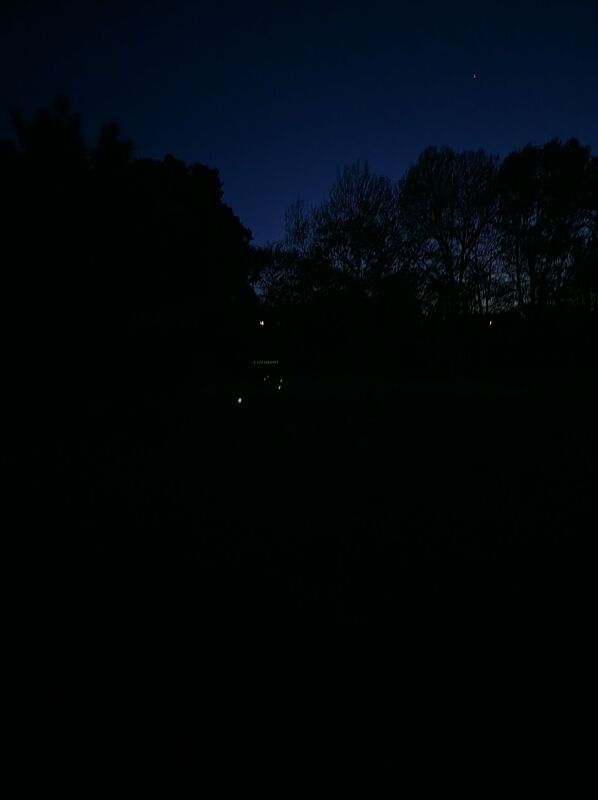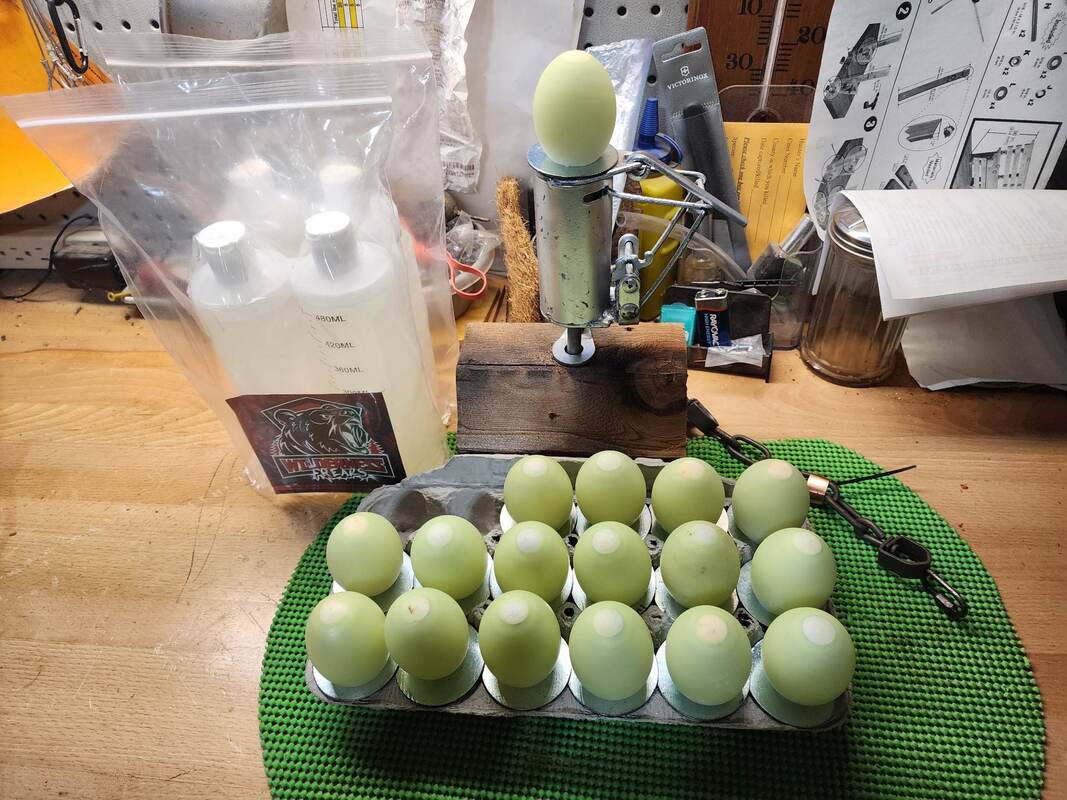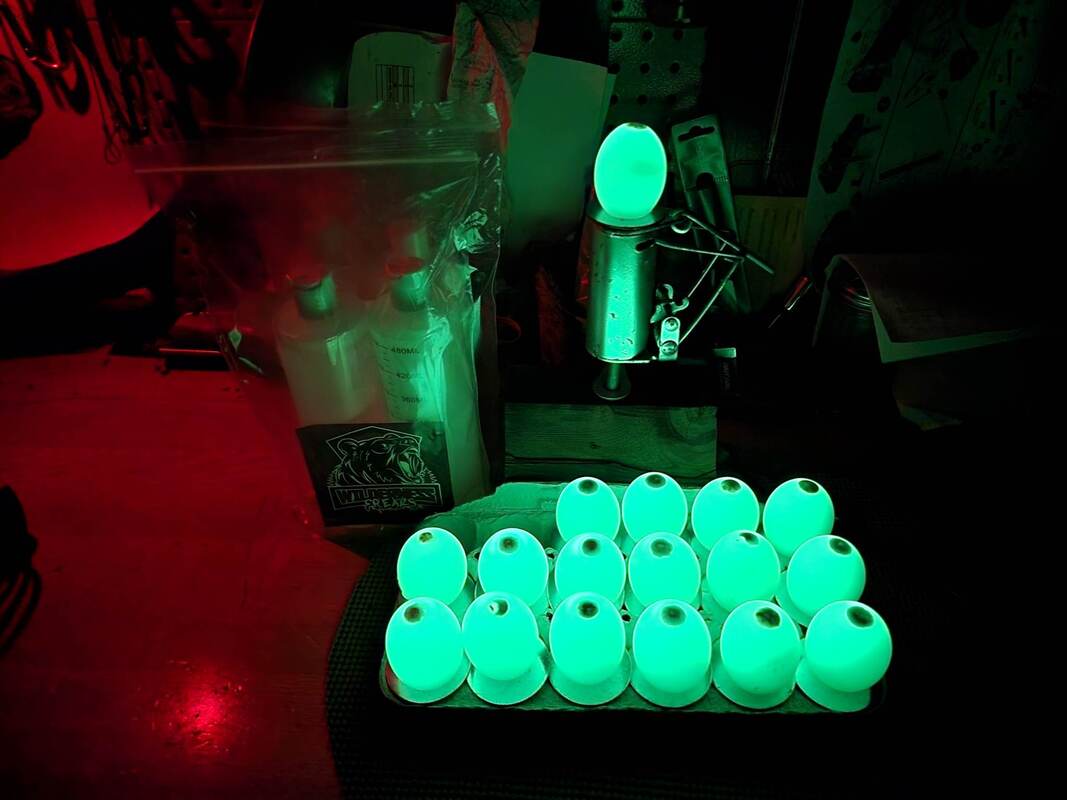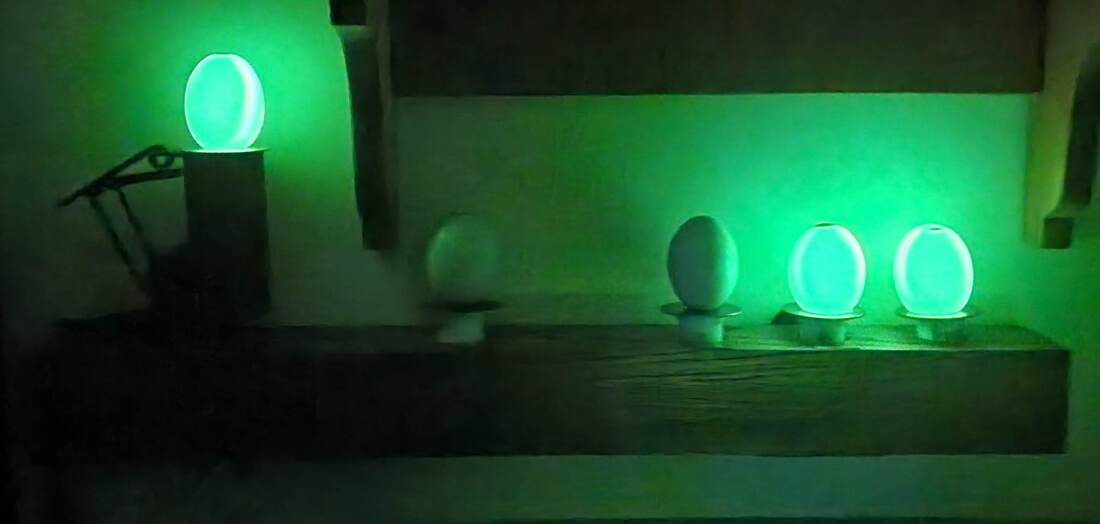Like North American Wildlife & Habitat on Facebook
Order the book on Amazon - http://a.co/hu15aBd
POWER OF THE EGG
The No. 1 Nest Predator - Research going back to 1948 by biologist across the nation, has the same results.
Raccoon is always the answer.
So why not use an the POWER of the EGG.
173 years and counting of Raccoons desire for Eggs.
1851 - John James Audubon - The quadrupeds of North America.
The Raccoon - It is fond of eggs, and devours them raw avidity, and if it finds a nest will feast on them morning, noon and night without being satiated.
Being an expert climber, the Raccoon ascends trees with facility and frequently invades the nest of the woodpecker, although it may be secure against ordinary thieves, by means of his fore-feet getting hold of the eggs or the young birds. He watches too the soft-shelled turtle when she is about to deposit her eggs, for which purpose she leaves the water and crawling on to the white sand-bar, digs a hole and places them underneath the heated surface. Quickly does the rogue dig up the elastic ova, although ever so carefully covered, and appropriate them to his own use, notwithstanding the efforts of the luckless turtle to conceal them.
76 years and counting of research on Wild Turkeys nothing NEW, it's been the same story, only difference today no fur market and less trappers. You decide!
ALABAMA - 1948
RESULTS OF 107 "DUMMY" WILD TURKEY NESTS – 16 Nest Successful
Raccoon – 31 Nest Destroyed.
Skunks – 23 Nest Destroyed.
Opossum – 15 Nest Destroyed.
Snakes – 9 Nest Destroyed.
Crows – 6 Nest Destroyed.
Foxes – 2 Nest Destroyed.
Unknown – 2 Nest Destroyed.
Cattle – 1 Nest Destroyed.
Wild Hogs – 1 Nest Destroyed.
Dogs – 1 Nest Destroyed.
KENTUCKY - 1980's
Numbers of nests predatorized and percentages for identified nest predators at Land Between the Lakes.
Raccoons, opossums, and skunks were the primary nest predators at the Land Between the Lakes nest predators. TOTAL 107 Nest - 100.0% Destroyed
Raccoon - 52 Nest Destroyed 48.6%
Opossum - 21 Nest Destroyed 19.6%
Striped Skunk - 17 Nest Destroyed 15.9%
Grey Fox - 6 Nest Destroyed 5.6%
Birds - 5 Nest Destroyed 4.6%
Ground Hog - 4 Nest Destroyed 3.7%
Small Rodents - 2 Nest Destroyed 2.0%
FLORIDA- 1980's
TURKEY NESTING SUCCESS OM A FLORIDA STUDY AREA
Nesting success of wild turkeys was measured for 108 nests of radio-tracked hens on a Florida study area during an 8-year period
The turkey had a 59% success rate when predator control was not practiced.
The turkey had a 72% success rate where predator control was being carried out during the nesting season.
ALABAMA - 1980's
Nest Losses – 44.5%
40 cases
Raccoon – NO. 1 Predator
Dogs – No. 2
Opossums
Crows
Snakes
Skunks
Gray Foxes
Bobcats caused destruction of the nests by killing the hens in 3 cases but they did not eat the eggs.
The nest predation rate (Table 2) for all areas combined (119 nests) was 44.5%. Almost all of these nests were discovered after incubation had begun so this is not a complete picture of the impact of predators on turkey nests. No attempt was made to locate the nests until hens exhibited incubating behavior and numerous nests could have been, and probably were, destroyed during the period of egg laying.
Nest predators were identified in 40 cases of nest destruction and in 13 cases evidence was insufficient to identify the predator. The raccoon was the number 1 nest predator and the second most important was free ranging dogs. Opossums, crows, and, snakes, skunks, and gray foxes were also implicated as nest predators.
Bobcats caused destruction of the nests by killing the hens in 3 cases but they did not eat the eggs.
Poult Losses - 74.5% - Summary
One hen and 7 poults were killed by a bobcat 3 days after hatching
On predator control areas a total of 55.1% of the hens (1971-75) was accompanied by poults compared to only 24.4% on non-predator control areas.
Total poult production was much higher on predator control areas than non-predator control areas for the 5 years.
176 hens and 609 poults seen on predator control areas. 5 year average of poult:hen ratio of 3.5 on predator control areas.
156 hens and 169 poults seen non predator control areas. 5 year average of poult:hen ratio 1.1
Missouri 1995
1995 – Missouri
In this study, predation caused, on average, 68% of the hen mortality on the two study areas
In this study, legal harvest accounted for 30% of the adult gobbler mortality, and predation accounted for 51% of the mortality.
Missouri 2021
Currenly 80% nest rate and only 15% re-nesting rate, why did they have to re nest in research in Northern Missouri? Weather, predation, nest destroyed?
About 75% of nests failed due to predation of the actual nest, and 8% failed due to predation of the hen that was incubating the clutch.
2022 - Oklahoma
Work started with 28 hen turkeys fitted with GPS or VHS radio trackers. Predators killed seven during mating season. Of 21 remaining, only nine are documented to have attempted a first nest and all those nests were lost.
Of those hens, seven attempted a second nesting. By the first of June only four nests remained active. Predators took the eggs of one nest, two nests failed due to predators killing the hens and one nest of four eggs saw a successful hatch of three poults.
The day after the poults were fitted with transmitters all three were killed. One died of unknown causes, one was killed by “a mammalian predator,” and one transmitter was found inside a cottonmouth snake. None of the hens attempted a third nest.
2022 – Alabama
ALABAMA RESEARCH UPDATE (YEAR 1) - Turkeys For Tomorrow
TFT’s preliminary results of this study are as follows:
A total of 20 hens were monitored during spring/summer 2022.
18/20 hens survived (90%).
15 hens (75%) attempted to nest. All hens in the study were adults at time of capture.
2 hens (10%) successfully hatched at least one poult. All other nests failed.
Brood survival was 0% (none of the hatched poults lived).
2022 IOWA RESEARCH UPDATE (YEAR 2) Turkeys for Tomorrow.
2022 IOWA RESEARCH UPDATE (YEAR 2) Turkeys for Tomorrow.
Dan Kaminski, a wildlife biologist with the Iowa DNR, has been marking hens and poults with GPS or VHF/radio transmitters since 2021. This has enabled Dan to evaluate population demographic parameters related to hen and poult survival, cause-specific mortality, and nesting rates.
A portion of Dan’s research is listed below and gives a glimpse into the challenges the wild turkey is facing in Iowa. These results are only for one year and so additional years of data are needed to understand how these numbers fit into the greater picture of turkey reproduction in Iowa.
- A total of 73 hens were marked last winter.
- As of early August, 27 hens have died for a mortality rate of 38%.
- Of 63 hens available to nest starting on May 1, only 7 nests hatched successfully (i.e., hatched at least one egg; 11% hen success rate).
- Of 33 hens marked with GPS transmitters, 7 hens did not incubate a nest, 17 incubated 1 nest, 8 incubated 2 nests, and 1 incubated 3 nests.
- Most of the nest failure was due to predation, however, one nest failed due to hay mowing and one failed due to abandonment by the hen
- The median day of nest failure was 8 days, and a preliminary nest survival model indicates 50% of nests failed by day 10 of incubation.
- Of the 7 nests that successfully hatched, the average clutch size was 9.9 eggs per nest and the average number of eggs hatched was 7.7 eggs per nest.
- Of the 54 eggs that hatched, 18 poults were observed during poult captures conducted within 1-3 days post-hatch and a total of 12 poults were marked with VHF/radio transmitters.
During 4-week flush counts for 6 of the 7 hens that hatched a nest, a total of 4 poults remained alive.
2022 TENNESEE RESEARCH UPDATE - Turkeys for Tomorrow.
Turkeys For Tomorrow is helping restore turkey populations in Tennessee by contributing funding to an ongoing research project in Spring 2023.
Dr. Craig Harper and Dr. David Buehler, both with University of Tennessee, have led a comprehensive study of wild turkey ecology and management in five counties of south-middle Tennessee for the past six years. Their preliminary findings are both striking and encouraging.
In brief, findings indicate low nest success and poult survival as a result of predation is limiting the population, and a two-week delay applied to the hunting season’s opening has not impacted any aspect of reproductive success.
By helping fund an additional year of study, Turkeys For Tomorrow will help Harper, Buehler, and their team collect another year of data that will include reproductive success, survival, habitat use, and a predator index, all of which will help provide managers and agencies with information needed to make key decisions related to the impact of predators and season-date decisions on public and private lands
Martin Labs Research will Tall Timbers dealing with quail.
Martin Game Lab and Tall Timbers
has the most informative, truth telling videos on predators that I have ever seen.
They even talk about the bias the Biologist are passing on to others.
https://www.facebook.com/GAMELabMartin/videos/4192679474139551/
Missouri 25 year Furbearer Report vs Poult Production
2021
EGG TEST
The Egg Test - Eye Appeal Only Test
Wooden Egg on top of a Duke DP.
Trapping Season is over in Missouri = Test only
Trap is not set, completely cleaned and no bait or scent.
I consider this a complete success and acutally better than I ever thought.
The Egg caught the eye of Rabbit, Multiple Raccoons, Coyote, Bobcat, Groundhog and Armadillo.
Reason I am trying this to get something that checks all my requirements.
1. To keep bait dry in trap,
2. Keep mice out,
3. Eye appeal for egg eaters,
4. Easy to make,
5. Easy to use.
Version 1.0 - Wooden Eggs
Power of the Egg
Items to Make - Dog Proof Raccoon Trap Topper
SallyFashion 24 PCS White Wooden Eggs Easter Eggs Fake Eggs for Children DIY Game, Kitchen Craft Adornment, Toy Foods on Amazon
3" Carriage Bolt, Nut, 2" Flat Washer, and 3/4" PVC Slip Cap
Results of First Season of the Wooden Egg
Cat Food fish based, dry koolaid and then trailing scents near trap
Down side of the Wood Egg - If within reach of Raccoon they will tear on the egg and paint.
Tether is not needed to keep animals from running away from with eggs.
Version 2.0 - Acrylic Eggs
Power of the Egg
Soild white thru out - Keep Racoons from destorying eggs, will replace wooden eggs as they get destoryed and can repaint wooden eggs..
Version 3.0 - Resin - Glow in the Dark
Power of the Egg
For Eye Appeal at Night
No clue if this will help, hurt or make any difference whatsoever in catching raccoon.
But they are very nosey.
But worth the try one time.
Version 3.0 of the
POWER OF THE EGG
Suppose to last 6 hours.
Few test photos at home.
Deployment 1/25/22 with video camera on it.
Photo below is 18 feet away
Version 3.1 - Resin - Chernobyl Raccoon Eggs
Power of the Egg
10 hours of green light
Raccoon Eyes tend to be round in shape to facilitate night vision. Eyes are large and convex, which allows for bright images to project into the retina. The retina contains fewer cones therefore raccoons tend to be color blindness or possibly have “color weak” vision. It may be difficult to detect colors but they can detect a difference in brightness. Eyes have also been described as extremely piercing because of red tinge they can contain. Binocular vision is possible since the eyes are positioned forward on the cranium but they have poor distance vision
I have used multiple Dog Proof Trap Covers in the past - Golf Balls, Food Cans, Red Solo Cups, Red Coffee Cans, and Refrigerator Magnets.
Photos taken at 12" away
Duke Dp - Black
Light / Dark
Golf Ball - Black
Light / Dark
Red Solo Cup
Light / Dark
Tin Can - Rusty
Light / Dark
Tin Can - White
Light / Dark
Coffee Can
Light / Dark
Wood Egg
Light / Dark
Resin Egg - White
Light / Dark
Chernobyl Raccoon Egg
Light / Dark
Phosphorescent Pigment Manufacture Information
How many hours will the phosphorescent pigment glow?
It is supposed to last for 12 hours.
How many times can the phosphorescent pigment be recharged?
It can be recharged millions of times. Even after ten years, they will retain 90 to 95 percent of their original light storing and emitting abilities.
Real World Time Test
Start Time
12 hours later
2022
EGG TEST
Started my 31 day test.
February 28, 2022 thru March 31, 2022
Washed, Cleaned, Repainted, Air out for days.
No Scent, No Food
Lone - Chernobyl Raccoon Egg Test
Then 31 day Cafeteria Test.
February 28, 2022 thru March 31, 2022
Washed, Cleaned, Repainted, Air out for days.
No Scent, No Food
Wood Egg, Resin Egg, Chernobyl Raccoon Egg and a golf ball.
Chernobyl Raccoon Egg
15 Second Water Test
Trap is wrapped with a umbrella made of plastic keep water out of collection jar.
No Cover 15 seconds water test
Results after 15 seconds of water - Results 8.52 ounces flowed thru trap
Golf Ball 15 seconds water test
Results after 15 seconds of water - Results 2.48 ounces flowed thru trap
Power of the Egg 15 seconds water test
Results after 15 seconds of water - Results .02 ounces flowed thru trap
Two Goals
I original had two goals.
My number one goal was to keep the mice out of my DP traps, they clean mine out overnight and even cage trap become useless because can’t keep bait in them.
70 mile round trip daily to check traps, cost way too much to play that game and feed mice.
Egg accomplished that 100%.
My second goal was to keep my food dry so that it was fresh and good scent, it’s NOT 100% waterproof and some food gets moldy, not counting the big swings in temperature from 30 degrees to 70 degrees in 8 hours causing condensation inside trap, but caught one coon after 54 days set and never touch trap.
I give myself 75% accomplished. Keeping my bait fresh and smelling great.
Raccoon
Conservation Status is Least Concern
Raccoon Eyesight
5 Books and 1 DVD all have the shiny bright objects in common
S. Stanley Hawbaker Book - Raccoon Trapping 1951 FIRST EDITION
Mentions how raccoons are fond of eggs from wild fowl and birds. Keys off a raccoon’s eyesight using feathers.
Scientific Community
Raccoons are thought to be color blind or at least poorly able to distinguish color, though their eyes are well-adapted for sensing light. - (Hohmann, p. 63; MacClintock, p. 18; Zeveloff, p. 66)
Eyes are large and convex, which allows for bright images to project into the retina. The retina contains fewer cones therefore raccoons tend to be color blindness or possibly have “color weak” vision. It may be difficult to detect colors but they can detect a difference in brightness. (Zeveloff 2002).
1981
|
2001
|
2002
|
Going from the footholds for raccoons to dog proofs in the early 80’s some history or knowledge was lost, forgotten or just not passed along as the type of trappers have changed from fur takers to landowners for management.
It is mentioned in the book the A Natural History of the Raccoons - MacClintock page was published in 1981 pre dog proof traps. “Trappers take advantage of this attraction to bright objects”
1933 thru 1981 publication it mentioned – Water Set – For Raccoons, a bright object like aluminum foil, clam shell, or bottle cap wired to pan will act as attractant.
Because of this information I now spray paint all my DP's with shiny metal color - With any moon it will reflect light.
Local Trappers
Missouri Trapper 1 - Ron Thornburgh Sr. - In my story “First Catches” which was in Trapper’s World I described how I caught my first raccoon with a piece of aluminum foil on a trap pan in 1962. One of my uncles had told me to do that.
Missouri Trapper 2 - Remembers people talking about aluminum foil and metal shiny crawdad's also for trapping raccoons.
FC Taylor catalog
This is from the FC Taylor catalog, I used tin foil on the pan, caught my first three raccoons on tin foil on trap pans set in shallow water.
1933 Montgomery Ward
Professional Trappers
They mention raccoons like to play with bright objects like brass trap tags, soda can tops, aluminum foil, fake crawdads or fake minnows. Even one book has the - Shiny-Pan Set
Trapping North America Furbearers 1st Edition came out in 1941.
|
Johnny Thorpe’s World Renowned North American Trapper - He was inducted into the National Trapper’s Hall of Fame in 1995.
|
Bill Musgrove - Trapper, Biologist and Wildlife Management Specialist
|
